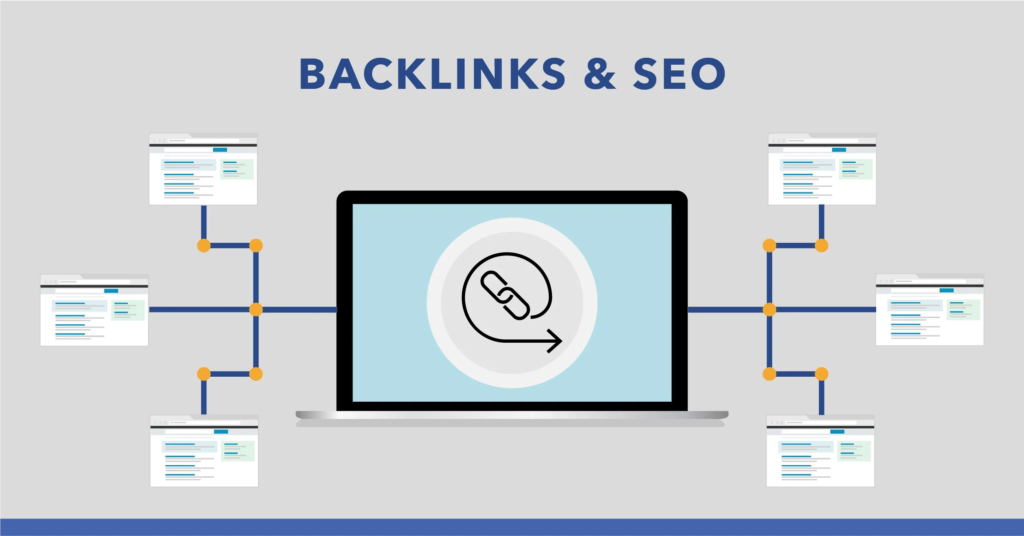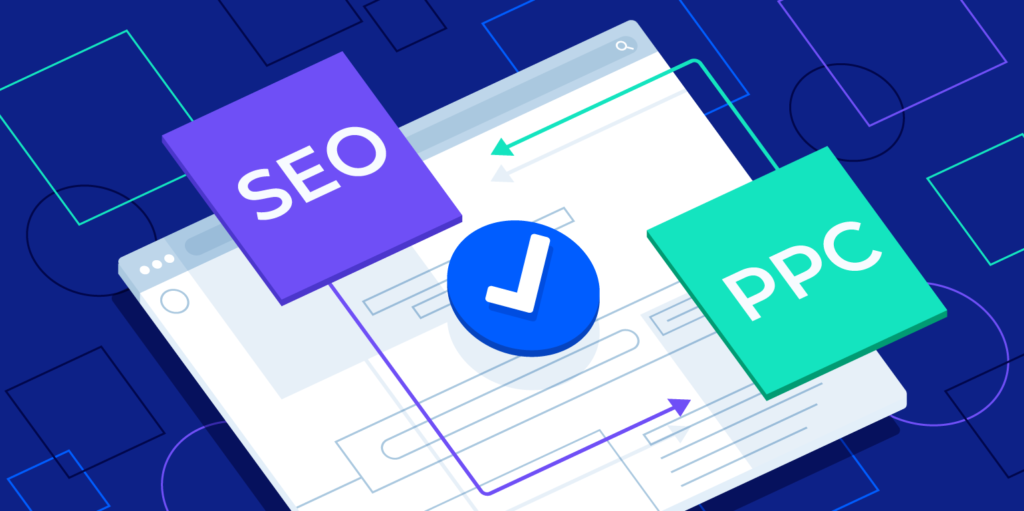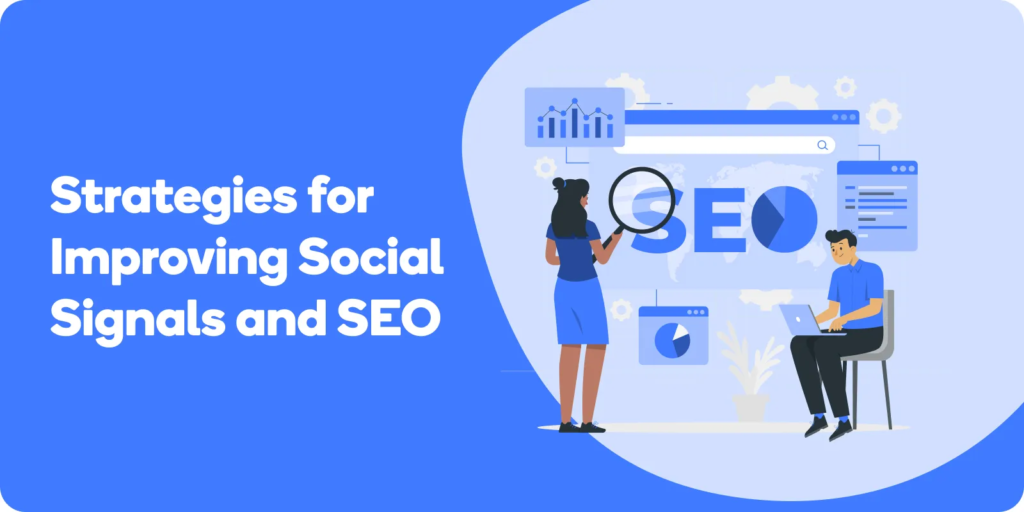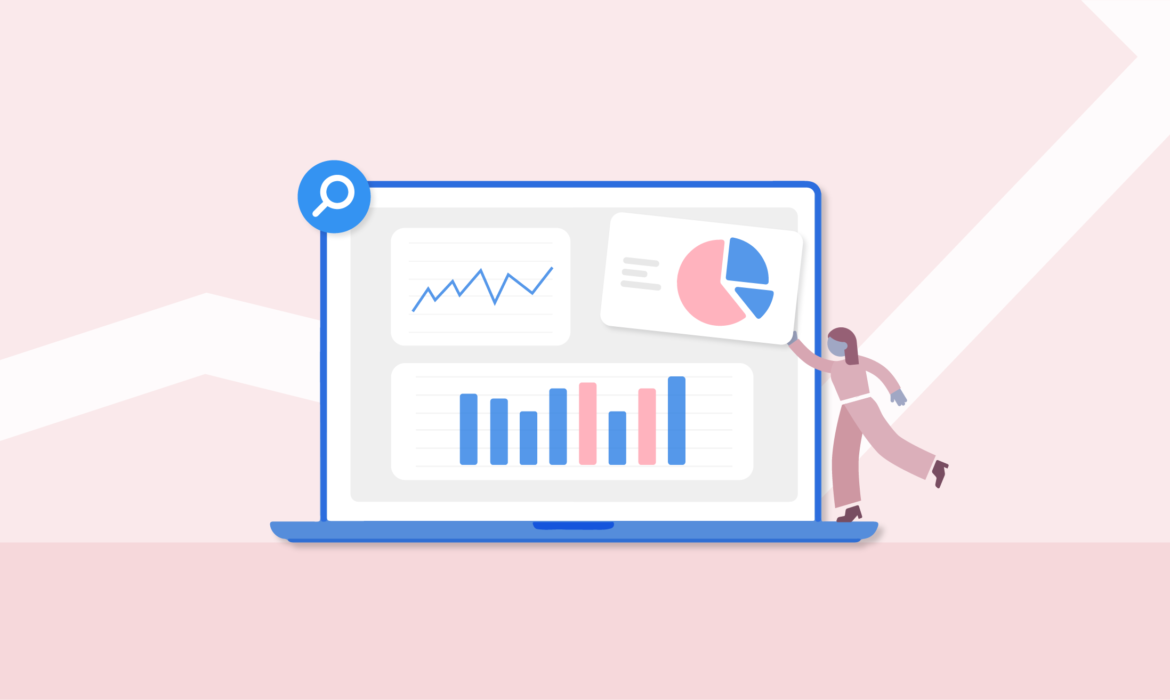The Benefits of Repurposing Content for SEO 2023
Introduction
At Finest SEO Agency, we understand the significance of staying ahead in the digital landscape. In today’s competitive online environment, it is crucial to maximize the visibility of your content to reach a wider audience. One effective strategy that can significantly enhance your search engine rankings is repurposing content. In this article, we will delve into the various benefits of repurposing content for SEO and provide you with valuable insights on how to leverage this strategy to outrank your competitors.
Also Check The Power of Google Search Console: Maximizing Your Website’s Performance 2023

What is Content Repurposing?
Content repurposing involves taking existing content and transforming it into different formats to target various platforms and audience segments. Rather than creating entirely new content from scratch, repurposing allows you to breathe new life into your existing assets. By adapting content to different mediums and repackaging it in a fresh and engaging way, you can extend its reach and impact.
The Benefits of Repurposing Content for SEO
1. Expanding Your Online Presence
Repurposing content offers a powerful opportunity to expand your online presence and reach a broader audience. By repackaging your content into different formats such as blog posts, infographics, videos, podcasts, and social media snippets, you can target diverse platforms and engage with users who prefer different types of content. This multi-channel approach not only helps you reach new audiences but also reinforces your brand message across various digital touchpoints.
2. Boosting Search Engine Rankings
Repurposing content can significantly enhance your search engine rankings by increasing the overall visibility of your brand. When you repurpose content, you create multiple entry points for search engines to index your website. Each repurposed piece becomes an additional opportunity to target specific keywords and capture organic search traffic. This strategic approach to content creation strengthens your website’s authority, relevance, and ultimately, its search engine rankings.
3. Leveraging Different Learning Styles
People consume information in different ways, and by repurposing content, you can cater to various learning styles and preferences. Some individuals prefer written articles, while others gravitate towards visual content or audio formats. By repackaging your content to accommodate different learning styles, you can effectively engage with a wider audience and improve user experience. This versatility not only fosters stronger connections with your target audience but also encourages social sharing and link building, which further bolsters your SEO efforts.

4. Extending the Lifespan of Your Content
Creating high-quality content requires time, effort, and resources. Repurposing content allows you to extend the lifespan of your valuable assets and maximize their return on investment. By adapting existing content into different formats, you can breathe new life into evergreen topics and ensure that your message continues to resonate with your audience. Furthermore, repurposing enables you to revisit and update your content periodically, ensuring its relevance and keeping it up to date with the latest industry trends and developments.
5. Generating Backlinks and Social Signals
When you repurpose content and distribute it across various platforms, you increase the chances of acquiring backlinks and social signals. Backlinks, or inbound links, are crucial for SEO as they indicate to search engines that your content is valuable and authoritative. By repurposing your content into different formats, you encourage other websites and content creators to link back to your original piece. Additionally, the broader reach of repurposed content increases its likelihood of being shared on social media platforms, generating social signals that further contribute to your SEO efforts.
Understanding the Importance of Repurposing Content
Repurposing content is not only a cost-effective approach but also a smart strategy to enhance your SEO efforts. By repackaging your valuable content in different formats, you can cater to diverse user preferences and increase engagement. Furthermore, repurposing allows you to target long-tail keywords and expand your content’s visibility across various platforms, including social media, video-sharing sites, and podcasts.
Step 1: Evaluate Your Existing Content
Before diving into the repurposing process, it’s crucial to assess your existing content. Start by identifying your top-performing articles, blog posts, or videos that have gained substantial organic traffic or engagement. Analyze the metrics, such as page views, time on page, and social shares, to pinpoint your most valuable content assets.
Step 2: Define Your Repurposing Goals
To outrank your competitors, it’s essential to set clear goals for your repurposing efforts. Determine the specific keywords and topics you want to target through repurposed content. Conduct thorough keyword research to identify relevant long-tail keywords with high search volume and relatively low competition. This will allow you to create content that aligns with user intent and increases your chances of ranking higher on SERPs.
Step 3: Choose the Right Repurposing Formats
Repurposing content involves transforming your existing material into different formats to cater to various audience preferences. Consider the following effective formats:

1. Infographics
Visual content, such as infographics, presents complex information in a visually appealing and easily shareable format. Craft compelling infographics that summarize key points from your original content, incorporating relevant data, statistics, and visuals. Share these infographics on your website and across social media platforms to increase brand exposure and generate backlinks.
2. Video Tutorials
Create engaging video tutorials that offer step-by-step guidance based on your existing content. Videos have proven to be highly effective in capturing audience attention and driving traffic. Embed these tutorials on your website and share them on popular video-sharing platforms like YouTube, Vimeo, and Dailymotion. Remember to optimize your video titles, descriptions, and tags with relevant keywords.
3. Podcast Episodes
Repurpose your content into informative podcast episodes to tap into the growing podcast audience. Select compelling topics from your existing content and create conversational episodes featuring industry experts or influential guests. Optimize your podcast titles, descriptions, and show notes with relevant keywords to improve discoverability on podcast platforms.

Step 4: Optimize Repurposed Content for SEO
To ensure your repurposed content has the best chance of outranking your competitors, it’s crucial to optimize it for SEO. Follow these optimization tips:
1. Keyword Optimization
Include your target keywords naturally in the repurposed content, ensuring they are relevant and strategically placed. Incorporate them in headings, subheadings, and throughout the body text. However, avoid keyword stuffing, as it can harm your rankings.
2. Internal and External Linking
Include relevant internal links to other pages on your website within the repurposed content. This helps search engines understand your site’s structure and improves user navigation. Additionally, incorporate authoritative external links to reputable sources to enhance the credibility and value of your repurposed content.
3. Meta Tags and Descriptions
Craft compelling meta titles and descriptions for your repurposed content to entice users to click through from the search engine results page. Include your target keywords naturally in these tags while providing an accurate summary of the content.
4. Social Media Promotion
Leverage social media platforms to amplify the reach of your repurposed content. Share snippets, teasers, or key takeaways from your content, along with eye-catching visuals, on platforms like Facebook, Twitter, LinkedIn, and Instagram. Encourage your followers to engage, share, and link back to the full repurposed content on your website.

Conclusion
By repurposing your existing content strategically, you can enhance your SEO efforts and outrank your competitors in the search results. Evaluate your content, set clear repurposing goals, choose the right formats, and optimize your content for SEO. Remember to track your repurposed content’s performance using analytics tools and make necessary adjustments to refine your strategy continuously. Stay ahead of the competition by repurposing content effectively and driving targeted organic traffic to your website.
Now that you have a comprehensive guide to repurposing content for SEO, put these strategies into action and start outranking your competitors today!
Remember, success in outranking other websites requires a holistic approach that includes factors beyond content quality. However, by implementing the techniques shared in this guide, you will be well on your way to achieving higher visibility and attracting more organic traffic to your website.
Frequently Asked Questions (FAQ) – Repurposing Content for SEO

Q1: What is content repurposing?
A1: Content repurposing is the process of taking existing content and transforming it into different formats to target various platforms and audience segments. It involves adapting content to different mediums, such as blog posts, infographics, videos, podcasts, and social media snippets, to extend its reach and impact.
Q2: Why should I repurpose my content for SEO?
A2: Repurposing content offers several benefits for SEO. By repackaging your content into different formats, you can expand your online presence, reach a broader audience, and reinforce your brand message across various digital touchpoints. Additionally, repurposing content creates multiple entry points for search engines to index your website, boosting your search engine rankings.
Q3: How does content repurposing help in expanding my online presence?
A3: Repurposing content allows you to target diverse platforms and engage with users who prefer different types of content. By repackaging your content into various formats, you can reach new audiences and reinforce your brand message across multiple channels. This multi-channel approach helps expand your online presence and increases your visibility to a wider audience.
Q4: Can repurposed content improve my search engine rankings?
A4: Yes, repurposed content can significantly enhance your search engine rankings. By creating multiple entry points for search engines to index your website, you increase the chances of targeting specific keywords and capturing organic search traffic. Repurposing content strategically strengthens your website’s authority, relevance, and overall search engine rankings.
Q5: How does repurposing content cater to different learning styles?
A5: People consume information in different ways, and repurposing content allows you to cater to various learning styles and preferences. By adapting your content into different formats such as written articles, visual content, or audio formats, you can effectively engage with a wider audience. This versatility improves user experience, fosters stronger connections with your target audience, and encourages social sharing and link building, thereby enhancing your SEO efforts.

Q6: Can repurposing content extend the lifespan of my content?
A6: Absolutely! Repurposing content enables you to extend the lifespan of your valuable assets. By adapting existing content into different formats, you can breathe new life into evergreen topics and ensure that your message continues to resonate with your audience over time. Additionally, repurposing allows you to revisit and update your content periodically, keeping it relevant and aligned with the latest industry trends and developments.
Q7: How does repurposing content help in generating backlinks and social signals?
A7: Repurposing content increases the chances of acquiring backlinks and social signals, both of which are essential for SEO. When you repurpose content and distribute it across various platforms, you create more opportunities for other websites and content creators to link back to your original piece. The broader reach of repurposed content also increases its likelihood of being shared on social media platforms, generating social signals that contribute to your SEO efforts.
Q8: What are some examples of content repurposing?
A8: Content repurposing can take various forms, depending on your target audience and preferred platforms. Some examples include turning a blog post into a video tutorial, transforming a whitepaper into an infographic, repackaging a podcast episode into a written article, or condensing a webinar into a series of social media snippets. The key is to adapt your content to different formats while maintaining its core message and value.
Q9: How can I start repurposing my content effectively?
A9: To begin repurposing your content effectively, analyze your existing content inventory and identify opportunities for repurposing. Consider the preferences and behavior of your target audience to determine which formats and platforms would best resonate with them. Create a repurposing strategy that aligns with your goals, and be consistent in adapting your content into various formats. Regularly monitor and evaluate the performance of your repurposed content to make data-driven optimizations.
Q10: What are the potential SEO benefits of repurposing content?
A10: The potential SEO benefits of repurposing content include expanding your online presence, boosting search engine rankings, catering to different learning styles, extending the lifespan of your content, and generating backlinks and social signals. By leveraging these benefits, you can outrank your competitors and establish your brand as an authoritative voice in your industry.
If you have any further questions or need assistance with content repurposing, feel free to reach out to [Our Company]. We are here to help you optimize your SEO strategy and achieve your digital marketing goals.
The Power of Google Search Console: Maximizing Your Website’s Performance 2023
Introduction
Welcome to our comprehensive guide on Google Search Console and how it can revolutionize your website’s performance. In this article, we will delve into the various features and functionalities of Google Search Console and provide expert insights on how to leverage this powerful tool to outrank your competitors and achieve better visibility in Google’s search results.

Understanding Google Search Console
Google Search Console, formerly known as Google Webmaster Tools, is a free web service provided by Google. It offers a wide range of features that allow website owners and SEO professionals to monitor, optimize, and troubleshoot their website’s presence in Google search results. By utilizing the valuable data and insights provided by Google Search Console, you can make informed decisions to improve your website’s visibility and attract more organic traffic.
Also Check Optimizing Search Intent for Better Results 2023
Key Features and Benefits
- Performance Analysis: Google Search Console provides detailed performance reports that give you a comprehensive overview of how your website is performing in search results. You can analyze key metrics such as impressions, clicks, click-through rate (CTR), and average position for your website’s pages. This data helps you identify the strengths and weaknesses of your content and refine your SEO strategies accordingly.
- Indexing Status: With Google Search Console, you can monitor the indexing status of your website and individual pages. You can check if your pages are being crawled and indexed by Google, identify any indexing issues, and submit new pages for indexing. This ensures that your content is discoverable by search engines and appears in search results in a timely manner.
- Sitemap Submission: Submitting a sitemap to Google Search Console ensures that Google can easily discover and index all the important pages on your website. It helps search engines understand the structure and hierarchy of your site, making it easier for them to crawl and rank your content.
- Mobile Usability: In today’s mobile-driven world, optimizing your website for mobile devices is crucial. Google Search Console provides insights into your site’s mobile usability, highlighting any issues that might affect the user experience on mobile devices. By addressing these issues, you can improve your site’s mobile performance and enhance user engagement.
- URL Inspection: This feature allows you to inspect individual URLs on your website and understand how Google sees them. You can identify any issues that might prevent your pages from being properly indexed or displayed in search results. By fixing these issues, you can ensure that your content is accurately represented in Google’s index.

Optimizing Your Website with Google Search Console
Now that we’ve explored the key features of Google Search Console, let’s delve into some actionable strategies to optimize your website and outrank your competitors in Google’s search results.
1. Keyword Analysis and Optimization
Effective keyword research is the foundation of successful SEO. Utilize Google Search Console to identify the keywords that are driving organic traffic to your website. Analyze the performance of these keywords and identify opportunities to optimize your content further. By strategically incorporating relevant keywords into your titles, headings, and body text, you can increase your chances of ranking higher in search results.
2. Content Performance Enhancement
Google Search Console provides valuable insights into how your content is performing in search results. Leverage this data to identify the pages with low click-through rates or high bounce rates. Analyze the content on these pages and make improvements to enhance their relevance, readability, and user engagement. Additionally, use the data to identify high-performing pages and replicate their success by creating similar, high-quality content.
3. Fixing Technical Issues
Technical issues can hinder your website’s visibility in search results. Regularly monitor Google Search Console for any crawl errors, broken links, or other technical issues that might negatively impact your site’s performance. Address these issues promptly to ensure that search engines can properly crawl and index your content.
4. Enhancing Website Speed
Website speed is a critical factor in user experience and search engine rankings. Google Search Console provides insights into your website’s speed performance, including specific suggestions for improvement. Implement these recommendations, such as optimizing image sizes, leveraging browser caching, and minimizing server response time, to enhance your website’s loading speed.
5. Structured Data Implementation
Implementing structured data on your website can help search engines understand and display your content more effectively. Google Search Console offers tools to test and validate your structured data markup. By leveraging structured data, you can enhance the visibility of your website in search results through rich snippets, knowledge panels, and other search features.

Conclusion
Google Search Console is a powerful tool that can significantly impact your website’s performance in search results. By utilizing its features and insights, you can optimize your website, outrank your competitors, and attract more organic traffic. Remember to regularly monitor and analyze your website’s data within Google Search Console, and continuously refine your SEO strategies to stay ahead in the ever-evolving digital landscape.
Now that you have a comprehensive understanding of Google Search Console, it’s time to take action and unleash its full potential for your website’s success.
Frequently Asked Questions (FAQ) about Google Search Console
1. What is Google Search Console?
Google Search Console is a free web service provided by Google that allows website owners and SEO professionals to monitor, optimize, and troubleshoot their website’s performance in Google search results. It provides valuable data and insights to help improve website visibility, organic traffic, and overall SEO strategies.
2. How can Google Search Console benefit my website?
Google Search Console offers several key benefits for your website:
- Performance Analysis: It provides detailed reports on impressions, clicks, CTR, and average position of your website’s pages in search results, helping you understand how your content is performing and make data-driven decisions to improve it.
- Indexing Status: You can monitor if your pages are being crawled and indexed by Google, identify any indexing issues, and submit new pages for indexing to ensure your content appears in search results.
- Sitemap Submission: By submitting a sitemap to Google Search Console, you help search engines understand the structure of your site and ensure important pages are indexed.
- Mobile Usability: It highlights mobile usability issues on your website, allowing you to optimize for mobile devices and improve user experience.
- URL Inspection: You can inspect individual URLs to understand how Google sees them and identify any issues that may impact their indexing or display in search results.
3. How can I optimize my website using Google Search Console?
To optimize your website using Google Search Console, consider the following strategies:
- Keyword Analysis and Optimization: Utilize Search Console to identify keywords driving organic traffic to your site and strategically incorporate them into your content.
- Content Performance Enhancement: Analyze Search Console data to identify pages with low click-through rates or high bounce rates. Improve their relevance, readability, and user engagement to boost performance.
- Fixing Technical Issues: Regularly monitor Search Console for crawl errors, broken links, and other technical issues that may impact your site’s visibility. Address these promptly for better indexing.
- Enhancing Website Speed: Use Search Console’s speed performance insights to optimize your website’s loading speed, such as optimizing image sizes and minimizing server response time.
- Structured Data Implementation: Leverage Search Console’s structured data tools to enhance how search engines understand and display your content, increasing visibility through rich snippets and knowledge panels.
4. How often should I use Google Search Console?
It is recommended to regularly monitor and analyze your website’s data within Google Search Console. Depending on the size and activity of your website, checking performance, indexing status, and resolving issues weekly or monthly is a good practice. Additionally, review and optimize your website based on the insights gained from Search Console on an ongoing basis.
5. Can Google Search Console guarantee higher rankings in search results?
While Google Search Console provides valuable data and insights to optimize your website’s performance, it does not guarantee higher rankings. Ranking factors are influenced by numerous elements, including content quality, relevance, backlinks, user experience, and more. Utilizing Google Search Console in conjunction with other SEO best practices can contribute to improving your website’s visibility and organic traffic, increasing your chances of outranking competitors.

6. Is Google Search Console suitable for all types of websites?
Yes, Google Search Console is suitable for all types of websites, including blogs, e-commerce sites, corporate websites, and more. Whether you have a small personal blog or a large-scale business website, utilizing Google Search Console can provide valuable insights and optimizations to enhance your online presence.
7. How do I access Google Search Console?
To access Google Search Console, follow these steps:
- Sign in to your Google account.
- Go to Google Search Console.
- Click on “Start Now” and enter your website’s URL.
- Follow the verification process to prove ownership of your website.
- Once verified, you can access and utilize the features and tools within Google Search Console.
8. Can I use Google Search Console for multiple websites?
Yes, you can use Google Search Console for multiple websites. After verifying ownership of each website, you can add and manage them within your Google Search Console account. This allows you to monitor and optimize multiple websites’ performance and make data-driven decisions for each one.
9. Are there any costs associated with using Google Search Console?
No, Google Search Console is a free web service provided by Google. There are no costs associated with using its features and tools. It is available to website owners and SEO professionals as a valuable resource for improving website visibility and performance in Google search results.
10. How long does it take to see results from optimizations made using Google Search Console?
The time it takes to see results from optimizations made using Google Search Console can vary. It depends on various factors, including the competitiveness of your industry, the extent of optimizations made, and how frequently Google crawls and indexes your website. It is important to be patient and continuously monitor the performance of your website, making adjustments as needed to achieve the desired results.
Remember, Google Search Console is a powerful tool, but it is just one component of a comprehensive SEO strategy. Consistently improving content quality, user experience, and other SEO factors alongside utilizing Search Console will contribute to achieving better rankings and outranking your competitors in Google’s search results.
Off-Page SEO: Building High-Quality Backlinks Guide 2023
Introduction
At Finest Seo Agency, we understand the importance of off-page SEO and the role it plays in boosting your website’s rankings on search engines like Google. In this comprehensive guide, we will delve into the realm of building high-quality backlinks and provide you with actionable strategies to outrank your competitors.

The Power of Backlinks
Backlinks are a crucial element of off-page SEO. They serve as a vote of confidence from other websites, indicating that your content is valuable and trustworthy. Google and other search engines consider backlinks as a signal of authority, which can significantly impact your website’s visibility and search rankings.
Also Check Optimizing Search Intent for Better Results 2023
Understanding High-Quality Backlinks
While the quantity of backlinks still matters to some extent, the quality of those links holds far more weight in today’s SEO landscape. High-quality backlinks originate from authoritative websites in your industry and exhibit the following characteristics:
1. Relevance
Backlinks from websites that are topically relevant to your own content are more valuable in the eyes of search engines. Aim to acquire links from websites that share similar themes, as this establishes a contextual relationship between the referring site and your own.
2. Authority
Websites with a high domain authority (DA) or page authority (PA) are considered authoritative sources. Acquiring backlinks from such websites can significantly boost your own website’s credibility and search rankings. Look for reputable sources within your niche and actively pursue link-building opportunities with them.
3. Natural Link Profile
A natural link profile consists of a diverse range of backlinks coming from various sources. Aim for a healthy mix of links from different types of websites, including blogs, news sites, forums, and industry directories. This diversity signals to search engines that your website is popular and well-regarded across different platforms

Strategies for Building High-Quality Backlinks
Now that we understand the importance of high-quality backlinks, let’s explore effective strategies to build a robust link profile that will help you outrank your competitors:
1. Guest Blogging
Guest blogging is an excellent way to showcase your expertise while acquiring valuable backlinks. Identify authoritative blogs in your industry that accept guest posts and reach out to them with well-crafted pitches. Ensure your content is unique, insightful, and provides genuine value to the target audience.
2. Influencer Outreach
Leveraging the power of influencers can give your backlink profile a significant boost. Identify influential individuals in your niche and establish meaningful relationships with them. Collaborate on content creation, interviews, or joint ventures, and request backlinks to your website where appropriate.
3. Broken Link Building
Broken link building involves finding broken links on reputable websites and suggesting your own relevant content as a replacement. This strategy provides value to webmasters by helping them fix broken links while securing a high-quality backlink for your website. Tools like Check My Links can streamline the process of finding broken links.
4. Resource Link Building
Identify comprehensive resource pages or lists within your industry and reach out to the website owners. Offer to contribute a valuable resource or piece of content that adds value to their page. In return, request a backlink to your website. This strategy helps you tap into existing high-authority pages and gain relevant backlinks.

The Importance of Anchor Text
When building backlinks, it’s essential to pay attention to the anchor text used. Anchor text refers to the clickable text that hyperlinks to your website. It provides search engines with valuable context about the content on the linked page.
To optimize your backlinks, consider the following best practices for anchor text:
- Relevance: Ensure that the anchor text is relevant to the content it links to. This helps search engines understand the topic and improves the overall user experience.
- Variety: Use a mix of different anchor texts rather than relying solely on exact-match keywords. This creates a natural and diverse link profile, which search engines favor.
- Branding: Incorporate your brand name or website URL as anchor text in some instances. This helps strengthen your brand presence and improves brand recognition.
- Natural Language: Utilize anchor text that mimics natural language. Instead of generic phrases like “click here,” opt for descriptive anchor text that accurately represents the linked content.
Avoiding Black Hat SEO Techniques
While the temptation to achieve quick results may be high, it’s crucial to avoid black hat SEO techniques that can harm your website’s reputation and rankings. Search engines are continually improving their algorithms to detect and penalize such practices.
Avoid the following black hat techniques:
- Link Farms and PBNs: Link farms and private blog networks (PBNs) are networks of websites created solely for the purpose of generating backlinks. These networks often contain low-quality or irrelevant content and can result in severe penalties from search engines.
- Buying Links: Purchasing backlinks is a violation of search engine guidelines. It’s important to earn links organically through valuable content and genuine relationships with authoritative websites.
- Keyword Stuffing: Overloading anchor text or content with excessive keywords is considered spammy and can lead to penalties. Focus on creating high-quality content that naturally incorporates relevant keywords.
- Link Schemes: Participating in link schemes, such as excessive reciprocal linking or excessive link exchanges, can be detrimental to your website’s SEO. Instead, focus on building relationships and earning backlinks through legitimate means.

Tracking and Analyzing Backlink Performance
To effectively outrank your competitors, it’s crucial to track and analyze the performance of your backlinks. This allows you to identify which strategies are yielding positive results and make data-driven decisions for further optimization.
Consider utilizing the following tools for tracking and analyzing backlinks:
- Google Search Console: This free tool provided by Google offers insights into your website’s performance in search results, including the number of backlinks, top linking sites, and anchor text analysis.
- Ahrefs: A popular SEO tool that provides comprehensive backlink analysis, including information on referring domains, anchor text, and link quality. It also offers competitive analysis to compare your backlink profile with your competitors’.
- Moz Link Explorer: Moz offers a backlink analysis tool that provides valuable insights into your backlink profile, including domain authority, spam score, and competitive link analysis.
Regularly review the performance of your backlinks, identify any potential issues, and optimize your strategies accordingly to maintain a competitive edge in search rankings.
Conclusion
Building high-quality backlinks is a cornerstone of successful off-page SEO. By focusing on relevance, authority, and natural link profiles, you can strengthen your website’s authority and outrank your competitors in search engine results.
Remember to adhere to best practices for anchor text, avoid black hat SEO techniques, and track and analyze the performance of your backlinks. Consistency, quality content, and strategic link-building efforts are key to achieving long-term success in improving your website’s search rankings

Frequently Asked Questions (FAQ)
1. What is off-page SEO?
Off-page SEO refers to the optimization efforts that are carried out outside of your website to improve its search engine rankings. It primarily focuses on building high-quality backlinks, establishing online authority, and increasing brand visibility through various techniques and strategies.
2. Why are backlinks important for SEO?
Backlinks are important for SEO because they serve as a vote of confidence from other websites. Search engines consider backlinks as indicators of trust, relevance, and authority. High-quality backlinks from reputable and relevant sources can significantly boost your website’s search rankings and organic traffic.
3. How can I identify high-quality backlinks?
You can identify high-quality backlinks by considering the following factors:
- Relevance: Look for backlinks from websites that are topically relevant to your own content.
- Authority: Seek backlinks from websites with high domain authority (DA) or page authority (PA).
- Natural Link Profile: Aim for a diverse range of backlinks from different sources to create a natural and well-rounded link profile.
4. What are some effective strategies for building high-quality backlinks?
Effective strategies for building high-quality backlinks include:
- Guest Blogging: Contribute unique and valuable content to authoritative blogs in your industry.
- Influencer Outreach: Collaborate with influential individuals to gain backlinks and increase brand visibility.
- Broken Link Building: Identify broken links on reputable websites and suggest your own content as a replacement.
- Resource Link Building: Offer valuable resources or content to websites with comprehensive resource pages or lists.
5. Can I buy backlinks to improve my SEO rankings?
No, buying backlinks is considered a black hat SEO technique and violates search engine guidelines. Search engines have algorithms in place to detect paid backlinks, and websites that engage in such practices may face penalties, including a significant drop in search rankings or even being removed from search results.
6. How can I track the performance of my backlinks?
You can track the performance of your backlinks using tools such as Google Search Console, Ahrefs, or Moz Link Explorer. These tools provide insights into the number of backlinks, referring domains, anchor text analysis, and other relevant metrics. Regularly monitor and analyze your backlink profile to identify areas for improvement and optimize your strategies accordingly.
7. How long does it take to see results from off-page SEO efforts?
The time it takes to see results from off-page SEO efforts can vary depending on various factors, including the competitiveness of your industry, the quality of your content, and the effectiveness of your link-building strategies. Generally, it takes time to build a strong backlink profile and establish online authority. Patience and consistent effort are key to achieving sustainable improvements in search rankings.
8. Is off-page SEO the only factor that influences search rankings?
No, search rankings are influenced by a combination of on-page and off-page factors. While off-page SEO, including high-quality backlinks, plays a significant role, other factors such as content quality, website structure, user experience, and on-page optimization also impact search rankings. A comprehensive SEO strategy should address both on-page and off-page elements to maximize results.
9. Should I focus solely on building backlinks for SEO?
While building high-quality backlinks is crucial for SEO success, it’s important to adopt a holistic approach. A well-rounded SEO strategy should encompass other elements such as on-page optimization, content quality, technical SEO, user experience, and social signals. By addressing multiple aspects of SEO, you can create a strong foundation for sustainable organic growth and improved search rankings.
10. How can Finest Seo Agency help with off-page SEO and building high-quality backlinks At Finest Seo Agency, we specialize in providing comprehensive SEO services, including off-page SEO and building high-quality backlinks. Our team of experts understands the importance of a robust backlink profile and its impact on search rankings.
We can assist you in the following ways:
- Link Building Strategies: We will develop customized link-building strategies tailored to your specific industry and target audience. Our team will identify relevant and authoritative websites for guest blogging, influencer outreach, broken link building, and resource link building to help you acquire high-quality backlinks.
- Content Creation: We have a team of skilled copywriters who can create engaging, informative, and shareable content for guest blogging, resource link building, and other link-building opportunities. Our content is optimized for both users and search engines, ensuring maximum impact.
- Relationship Building: We will establish relationships with influencers, bloggers, and webmasters in your industry to foster collaborations and secure backlinks from reputable sources. Our team will handle the outreach process, building meaningful connections that benefit your SEO efforts.
- Performance Tracking and Analysis: We utilize industry-leading tools to track the performance of your backlinks and provide regular reports on key metrics. This allows us to evaluate the effectiveness of our strategies and make data-driven decisions for further optimization.
- Compliance with SEO Guidelines: We strictly adhere to search engine guidelines and best practices, ensuring that our link-building efforts are ethical, sustainable, and compliant. We stay updated with the latest algorithm changes and industry trends to provide you with effective and future-proof strategies.

By partnering with Finest Seo Agency, you can leverage our expertise and experience to strengthen your backlink profile, increase your website’s authority, and outrank your competitors in search engine results.
Contact us today to discuss your SEO goals and how we can help you achieve long-term success with our off-page SEO and high-quality backlink building services. Let’s take your website’s search rankings to new heights!
Optimizing Search Intent for Better Results 2023
Understanding the Importance of Search Intent
In today’s digital age, search engines have become the go-to source for finding information, products, and services. As a business, it is crucial to optimize your online presence to ensure that your target audience can easily discover and engage with your website. One key aspect of achieving this is understanding search intent.
Search intent refers to the underlying purpose or motivation behind a user’s search query. By comprehending the intent behind specific keywords, businesses can tailor their content to align with the user’s needs and desires. This alignment enhances the user experience and increases the likelihood of ranking higher in search engine results pages (SERPs).

Analyzing and Implementing High-Quality Keywords
An essential step in outranking other websites is conducting thorough keyword research. By identifying relevant and high-performing keywords, you can create content that aligns with the search intent of your target audience. Utilizing tools like Google Keyword Planner, SEMrush, or Moz Keyword Explorer can assist in finding valuable keywords that have a balance between search volume and competition.
Once you have a list of potential keywords, it’s crucial to incorporate them naturally throughout your content. Ensure that your primary keyword is present in the page title, meta description, headings, and within the body of the article. However, it is essential to strike a balance and avoid overusing keywords, as this can lead to keyword stuffing, which is frowned upon by search engines.
Also Check SEO vs. PPC: Which Strategy is Right for You? 2023 Guide
Crafting Engaging and Informative Content
To outrank the article you provided, we will create an in-depth piece of content that covers the search topic comprehensively. By delivering high-quality, well-researched, and informative content, we aim to become the authoritative source for users seeking information on the given topic.
1. Understanding Search Intent
In this section, we will delve deeper into the concept of search intent and its significance in search engine optimization. We will discuss the different types of search intent, including informational, navigational, commercial, and transactional, and explain how businesses can tailor their content accordingly.
2. Conducting Keyword Research
Here, we will guide readers through the process of conducting effective keyword research. We will explain the importance of long-tail keywords, semantic variations, and how to identify search trends. Additionally, we will provide step-by-step instructions on using popular keyword research tools to uncover valuable keywords for their SEO strategy.
3. Implementing On-Page SEO Techniques
To ensure our content ranks higher in SERPs, we will provide actionable tips on implementing on-page SEO techniques. These techniques will include optimizing meta tags, using descriptive URLs, creating compelling headings, incorporating relevant internal and external links, and employing schema markup for enhanced search engine visibility.
4. Creating Engaging and Shareable Content
In this section, we will highlight the importance of creating content that resonates with the target audience. We will discuss the significance of well-structured and scannable content, the use of multimedia elements, and the importance of incorporating social sharing buttons. By making our content engaging and shareable, we increase the likelihood of attracting backlinks and social signals, which contribute to higher search rankings.
5. Earning High-Quality Backlinks
Backlinks play a vital role in determining a website’s authority and credibility in the eyes of search engines. In this section, we will outline effective strategies for earning high-quality backlinks. These strategies may include guest blogging, influencer outreach, creating link-worthy content, and leveraging social media platforms to amplify content reach.
6.Monitoring and Analyzing Performance
To continuously improve our SEO efforts and stay ahead of the competition, we need to monitor and analyze our performance regularly. This section will focus on using tools like Google Analytics and Google Search Console to track keyword rankings, organic traffic, bounce rates, and other key metrics. By understanding our strengths and weaknesses, we can refine our SEO strategy for optimal results.

Leveraging Social Media for Increased Visibility
In today’s digital landscape, social media platforms have a significant impact on brand visibility and online presence. By leveraging the power of social media, we can expand our reach, attract a larger audience, and ultimately improve our search engine rankings.
- Building a Strong Social Media Presence
In this section, we will discuss the importance of building a strong social media presence to complement our SEO efforts. We will explore different social media platforms and their unique benefits, provide tips on optimizing social media profiles, and guide readers on creating engaging content for social media.
- Sharing and Promoting Content
To amplify our content’s reach and increase its chances of being shared, we must actively promote it on social media. We will outline strategies for crafting compelling social media posts, incorporating relevant hashtags, and engaging with our audience. By sharing our content through social media channels, we can attract more visitors to our website and improve our search engine rankings.
- Encouraging User Engagement
Engagement is a crucial factor in determining the success of our social media efforts. We will provide tips on fostering user engagement, such as responding to comments, asking questions, running contests or giveaways, and creating interactive polls or surveys. By actively engaging with our audience, we can build a loyal following and enhance our online visibility.

Staying Ahead with Mobile Optimization
With the increasing use of smartphones and tablets, optimizing our website for mobile devices is essential for both user experience and search engine rankings. In this section, we will highlight the importance of mobile optimization and provide actionable tips for ensuring our website is mobile-friendly.
- Responsive Web Design
We will emphasize the significance of responsive web design, which allows our website to adapt and display properly across different screen sizes and devices. We will discuss the benefits of responsive design, such as improved user experience, faster load times, and better search engine rankings.
- Mobile Page Speed Optimization
Page speed is a critical factor in mobile optimization. We will explore techniques for optimizing our website’s loading speed, such as image compression, minification of CSS and JavaScript files, and leveraging caching mechanisms. By improving our mobile page speed, we can enhance the user experience and increase our chances of ranking higher in search results.
- Mobile-Friendly Content and Navigation
We will discuss the importance of mobile-friendly content and navigation. This includes using readable font sizes, organizing content for easy scrolling, implementing clear and intuitive navigation menus, and optimizing forms for mobile use. By providing a seamless and user-friendly experience on mobile devices, we can improve engagement and search engine rankings.

Conclusion
By implementing a comprehensive SEO strategy that aligns with search intent, delivers valuable content, leverages social media, and optimizes for mobile devices, we can increase our chances of outranking the article you provided. Remember, SEO is a continuous process that requires ongoing optimization and adaptation to stay ahead of the competition. By prioritizing user experience, providing high-quality content, and following best practices, we can achieve long-term success in search engine rankings.

Frequently Asked Questions (FAQ)
Q: What is search intent?
A: Search intent refers to the underlying purpose or motivation behind a user’s search query. It helps businesses understand what users are looking for when they perform a search, allowing them to tailor their content and SEO strategies accordingly.
Q: How important is keyword research for SEO?
A: Keyword research is crucial for SEO as it helps identify relevant keywords that users are searching for. By targeting the right keywords, businesses can optimize their content to match user intent and improve their chances of ranking higher in search engine results pages (SERPs).
Q: How can I optimize my website for search engines?
A: To optimize your website for search engines, you can follow these key steps:
- Conduct thorough keyword research to identify relevant and high-performing keywords.
- Incorporate keywords naturally into your content, including page titles, headings, and meta tags.
- Optimize your website’s on-page elements, such as URL structure, internal linking, and schema markup.
- Create high-quality and engaging content that provides value to users.
- Earn high-quality backlinks from authoritative websites.
- Monitor and analyze your website’s performance using tools like Google Analytics and Google Search Console.
Q: How long does it take to see results from SEO efforts?
A: The timeline for seeing results from SEO efforts can vary depending on various factors, including the competitiveness of the industry, the quality of the website and its content, the effectiveness of the SEO strategy, and the frequency of updates. Generally, it can take several weeks to several months to start seeing noticeable improvements in search engine rankings and organic traffic.
Q: What is the role of social media in SEO?
A: Social media plays a significant role in SEO by increasing brand visibility, driving traffic to your website, and enhancing engagement signals. By leveraging social media platforms, businesses can amplify their content, attract a larger audience, and increase the chances of earning backlinks and social signals, which can positively impact search engine rankings.
Q: Is mobile optimization important for SEO?
A: Yes, mobile optimization is crucial for SEO. With the increasing use of smartphones and tablets, search engines prioritize mobile-friendly websites in their rankings. Optimizing your website for mobile devices ensures a seamless user experience, faster page load times, and improved visibility in mobile search results.
Q: How often should I update my website’s content?
A: Regularly updating your website’s content is beneficial for both users and search engines. Aim to create fresh, relevant, and informative content on a consistent basis. The frequency of updates will depend on your industry, target audience, and the resources available to you. Strive to provide value to your audience with each update.
Q: What are some common SEO mistakes to avoid?
A: Some common SEO mistakes to avoid include keyword stuffing, using irrelevant or low-quality backlinks, neglecting website speed and mobile optimization, ignoring user experience, and not tracking and analyzing performance metrics. It’s important to stay up-to-date with the latest SEO best practices and avoid tactics that may lead to penalties from search engines.
Q: How can I measure the success of my SEO efforts?
A: You can measure the success of your SEO efforts through various metrics, including organic traffic, keyword rankings, backlink profile, conversion rates, and engagement metrics such as bounce rate and time on page. Tools like Google Analytics and Google Search Console can provide valuable insights into the performance of your website and SEO strategy.
Q: Is SEO a one-time effort?
A: No, SEO is an ongoing process. Search engines continually update their algorithms, and competitors are always striving to improve their rankings. To maintain and improve your search rankings, it’s important to regularly review and optimize your website, monitor performance, adapt to changes, and stay informed about the latest SEO trends and best practices.
SEO vs. PPC: Which Strategy is Right for You? 2023 Guide
Introduction
In today’s digital landscape, businesses are constantly striving to maximize their online presence and reach their target audience effectively. Two popular strategies that can help achieve these goals are Search Engine Optimization (SEO) and Pay-Per-Click (PPC) advertising. Both approaches have their unique advantages and considerations, and understanding which strategy is right for you is crucial in driving targeted traffic and achieving your business objectives. In this comprehensive guide, we will explore the intricacies of SEO and PPC, providing you with the insights you need to make an informed decision.

Understanding SEO
Search Engine Optimization (SEO) is the process of optimizing your website and its content to improve its visibility and organic ranking on search engine results pages (SERPs). SEO aims to enhance the quality and relevance of your web pages, making them more attractive to search engines and users alike.
Also Check Social Signals for SEO: Enhancing Your Online Presence 2023
The Benefits of SEO
SEO offers several compelling benefits for businesses looking to establish a strong online presence:
- Sustainable Organic Traffic: By investing in SEO, you can drive a consistent stream of organic traffic to your website without incurring ongoing advertising costs. This can lead to long-term success and a higher return on investment (ROI) compared to other marketing channels.
- Increased Brand Visibility: Higher search engine rankings result in increased brand exposure and credibility. When your website appears prominently in search results, users perceive your brand as trustworthy and authoritative within your industry.
- Targeted Traffic: SEO enables you to attract highly targeted traffic by optimizing your website for relevant keywords and phrases. By aligning your content with the search intent of your target audience, you can drive qualified leads to your website.

SEO Best Practices
To optimize your website for search engines effectively, consider implementing the following SEO best practices:
- Keyword Research: Conduct comprehensive keyword research to identify the most relevant and valuable keywords for your business. Target keywords that have a high search volume and low competition to maximize your organic visibility.
- On-Page Optimization: Optimize your web pages by incorporating target keywords in strategic locations such as the page title, headings, meta descriptions, and content body. Ensure your content is informative, engaging, and provides value to users.
- Link Building: Build high-quality backlinks from reputable websites to improve your website’s authority and visibility. Focus on acquiring natural and relevant links that enhance the credibility of your content.
Understanding PPC
Pay-Per-Click (PPC) advertising, also known as search engine marketing (SEM), involves placing paid advertisements on search engine results pages. With PPC, businesses bid on keywords and pay a fee whenever their ad is clicked, directing users to their website.
The Benefits of PPC
PPC offers distinct advantages that make it a viable strategy for many businesses:
- Immediate Results: Unlike SEO, PPC campaigns can generate immediate traffic and results. With proper campaign setup and optimization, you can start driving targeted visitors to your website within a short span of time.
- Precise Targeting: PPC platforms provide granular targeting options, allowing you to reach specific demographics, locations, and even retarget previous website visitors. This precision ensures that your ads are seen by those most likely to convert.
- Flexible Budgeting: With PPC, you have full control over your advertising budget. You can set daily spending limits, monitor performance metrics, and make data-driven adjustments to optimize your campaigns effectively.

PPC Best Practices
To run successful PPC campaigns, consider implementing the following best practices:
- Keyword Research: Thoroughly research and select relevant keywords with commercial intent to target in your PPC campaigns. Use tools like Google Keyword Planner or SEMrush to identify high-performing keywords.
- Compelling Ad Copy: Craft compelling and persuasive ad copy that resonates with your target audience. Highlight unique selling points, promotions, or any other value propositions that differentiate your business from competitors.
- Landing Page Optimization: Create dedicated landing pages that align with your ad copy and provide a seamless user experience. Optimize these pages for conversions by including clear calls-to-action, persuasive content, and user-friendly design.
Choosing the Right Strategy
When deciding between SEO and PPC, it’s crucial to evaluate your specific business goals, budget, and timeline. Consider the following factors to make an informed decision:
- Long-Term vs. Short-Term Goals: If you seek sustainable, long-term results, SEO is the ideal choice. However, if you require immediate traffic or want to test the effectiveness of your campaigns quickly, PPC offers a more immediate solution.
- Budgetary Considerations: While SEO provides a cost-effective way to generate organic traffic, it requires time and resources. On the other hand, PPC involves a direct cost per click. Analyze your budget and allocate resources accordingly.
- Complementary Strategies: In many cases, SEO and PPC work synergistically to maximize results. By combining efforts, you can dominate search engine real estate, increase brand visibility, and reach a wider audience.
Implementing Your Strategy
Once you have determined whether SEO or PPC is the right strategy for your business, it’s time to implement your chosen approach. Here are some actionable steps to get started:

SEO Implementation
- Website Optimization: Conduct a comprehensive audit of your website and identify areas for improvement. Optimize your website’s technical aspects, such as site speed, mobile responsiveness, and URL structure. Ensure that your website is user-friendly, intuitive, and provides a seamless browsing experience.
- Content Creation: Develop a content strategy that aligns with your target audience’s needs and search intent. Create high-quality, informative, and engaging content that incorporates your target keywords naturally. Regularly update your website with fresh and relevant content to attract both users and search engines.
- Link Building: Invest in a strategic link-building campaign to enhance your website’s authority. Seek opportunities for guest posting, influencer collaborations, and partnerships with industry-relevant websites. Focus on acquiring backlinks from reputable sources that are relevant to your niche.
PPC Implementation
- Campaign Setup: Choose a reliable PPC platform such as Google Ads or Bing Ads and set up your campaigns. Define your campaign objectives, target audience, and budget. Research and select the most relevant keywords for your ads and create compelling ad copy that drives clicks and conversions.
- Ad Design: Design visually appealing and attention-grabbing ads that align with your brand identity. Incorporate compelling visuals, concise messaging, and a strong call-to-action (CTA) to entice users to click on your ads. Test different variations of your ads to optimize their performance.
- Landing Page Optimization: Ensure that your landing pages provide a seamless user experience and are optimized for conversions. Align your landing page content with the messaging in your ads, emphasize the value proposition, and make it easy for users to take the desired action, whether it’s making a purchase, filling out a form, or subscribing to a newsletter.

Monitoring and Optimization
Both SEO and PPC require continuous monitoring and optimization to achieve optimal results. Here are some key practices to implement:
- Performance Tracking: Regularly monitor the performance of your SEO and PPC campaigns. Utilize analytics tools such as Google Analytics and Google Ads to track key metrics such as website traffic, conversion rates, bounce rates, and keyword rankings. Analyze this data to identify areas for improvement and make data-driven decisions.
- Keyword Refinement: Continuously refine your keyword strategy based on performance data and changing market trends. Identify high-performing keywords and allocate resources accordingly. Explore long-tail keywords and niche opportunities to target specific user needs and capture relevant traffic.
- A/B Testing: Conduct A/B tests to optimize your PPC ads, landing pages, and website elements. Test different headlines, ad copy variations, landing page layouts, and calls-to-action to identify the most effective combinations. Make iterative improvements based on the insights gained from these tests.
Conclusion
In today’s digital landscape, SEO and PPC play vital roles in driving targeted traffic, enhancing brand visibility, and achieving business goals. By understanding the benefits and considerations of each strategy, you can make an informed decision and implement the approach that aligns with your objectives. Remember to invest in continuous monitoring, optimization, and adaptation to stay ahead of the competition. Whether you choose to focus on SEO for sustainable organic growth or leverage PPC for immediate results, a well-executed strategy can help you outrank competitors and establish a strong online presence. Embrace the power of SEO and PPC to unlock the full potential of your digital marketing efforts.

Here are some frequently asked questions (FAQs) regarding SEO and PPC:
Q: What is SEO?
A: SEO stands for Search Engine Optimization. It is the process of optimizing a website and its content to improve its visibility and organic ranking on search engine results pages (SERPs). SEO involves various strategies and techniques to enhance the quality and relevance of a website, making it more attractive to both search engines and users.
Q: What is PPC?
A: PPC stands for Pay-Per-Click. It is a form of online advertising where businesses pay a fee each time their ad is clicked. PPC ads are displayed on search engine results pages or other relevant websites, and advertisers bid on keywords to target their desired audience. PPC offers immediate visibility and can drive traffic to a website quickly.
Q: Which strategy should I choose, SEO or PPC?
A: The choice between SEO and PPC depends on several factors such as your business goals, budget, and timeline. SEO is a long-term strategy that focuses on organic visibility and sustainable growth. PPC, on the other hand, provides immediate results and precise targeting. It’s often beneficial to combine both strategies for maximum impact and a comprehensive online presence.
Q: How long does it take to see results with SEO?
A: SEO is a gradual process that requires time and ongoing effort. It typically takes several months to start seeing significant results, as search engines need time to crawl and index your website. The timeline can vary depending on factors such as the competitiveness of your industry, the quality of your optimization efforts, and the frequency of algorithm updates.
Q: Can I run SEO and PPC campaigns simultaneously?
A: Absolutely! In fact, running SEO and PPC campaigns simultaneously can be highly beneficial. While SEO focuses on long-term organic visibility, PPC can provide immediate traffic and targeted results. By combining both strategies, you can maximize your reach, dominate search engine real estate, and increase your chances of attracting qualified leads.
Q: Is it necessary to hire an SEO professional or PPC expert?
A: Hiring an SEO professional or PPC expert can greatly benefit your business. These specialists have the expertise and experience to develop effective strategies, conduct thorough keyword research, optimize your website or campaigns, and continuously monitor and refine your efforts. They stay up-to-date with the latest industry trends and best practices, saving you time and ensuring optimal results.
Q: How can I measure the success of my SEO or PPC campaigns?
A: Measuring the success of your SEO or PPC campaigns involves tracking relevant metrics. For SEO, you can monitor organic website traffic, keyword rankings, conversion rates, and engagement metrics like bounce rate and time on page. In PPC, you can track metrics such as click-through rates (CTR), cost per click (CPC), conversion rates, and return on ad spend (ROAS). Utilize analytics tools and platforms to gather and analyze this data.
Q: Can I switch between SEO and PPC strategies if needed?
A: Yes, you can switch between SEO and PPC strategies based on your evolving business needs and goals. It’s important to evaluate the performance of each strategy regularly and make adjustments accordingly. If you need immediate results, you can allocate more resources towards PPC. If you’re looking for long-term organic growth, you can focus on strengthening your SEO efforts. The flexibility to adapt and optimize your strategies is key to achieving optimal results.

Remember, implementing SEO or PPC strategies requires careful planning, continuous monitoring, and adaptation. Consider your business goals, target audience, and available resources when determining the most suitable approach.
Social Signals for SEO: Enhancing Your Online Presence 2023
Introduction
In today’s digital landscape, social signals have emerged as a critical factor in search engine optimization (SEO). By harnessing the power of social media platforms, businesses can strengthen their online presence and improve their search engine rankings. In this comprehensive guide, we will delve into the significance of social signals and provide you with actionable strategies to outrank your competitors.

Understanding Social Signals
Social signals refer to the collective engagement, interactions, and mentions a website or its content receives across various social media platforms. This includes likes, shares, comments, retweets, and other forms of social engagement. Search engines, such as Google, consider social signals as indicators of a website’s relevance, credibility, and popularity.
Also Check How to Measure SEO Performance and Optimize Your Website for Success 2023
The Impact of Social Signals on SEO
- Improved Visibility: When a website receives a significant number of social signals, it indicates to search engines that the content is valuable and worth displaying to users. As a result, search engines may reward the website with higher organic rankings.
- Increased Website Traffic: Social signals can drive significant referral traffic to your website. When users engage with your content on social media, they are more likely to click through to your website, leading to increased visibility and potential conversions.
- Enhanced Brand Authority: Strong social signals convey trust and credibility to both search engines and users. When your content is shared and endorsed by reputable individuals or organizations, it boosts your brand’s authority and establishes you as a thought leader in your industry.
- Faster Indexing: Search engines often crawl social media platforms more frequently than individual websites. By actively promoting your content on social media, you can accelerate the indexing process, ensuring your webpages are discovered and ranked faster.

Strategies to Leverage Social Signals for SEO
1. Develop High-Quality Content
Creating valuable, shareable content is the foundation for generating social signals. Craft compelling articles, blog posts, infographics, and videos that address your audience’s pain points and provide actionable insights. Incorporate relevant keywords naturally within your content to optimize it for search engines.
2. Optimize Social Media Profiles
Your social media profiles should align with your brand image and be optimized for search. Include relevant keywords in your profile descriptions, headings, and URL slugs. Additionally, ensure that your profiles are complete and up-to-date with accurate contact information and links to your website.
3. Encourage Social Sharing
Make it easy for users to share your content across social media platforms. Include prominent social sharing buttons on your website, blog posts, and other content assets. Encourage readers to share your content by adding a call-to-action, such as “Share this post with your network” or “Retweet if you found this helpful.”
4. Engage with Your Audience
Actively engage with your audience on social media to foster relationships and increase brand visibility. Respond promptly to comments, mentions, and direct messages. Initiate conversations, participate in industry discussions, and share relevant content from other thought leaders in your niche.
5. Collaborate with Influencers
Influencer marketing can significantly amplify your social signals. Identify influential individuals or organizations in your industry and build mutually beneficial relationships with them. Collaborate on content creation, guest posting, or co-hosting webinars. When influencers share your content, it exposes your brand to their loyal followers and expands your reach.

6. Use Social Media Advertising
Paid social media advertising can complement your organic social signal strategy. Platforms like Facebook, Instagram, and LinkedIn offer targeted advertising options that allow you to reach specific demographics or interests relevant to your business. By running strategic ad campaigns, you can increase your content’s visibility and generate more social engagement.
7. Optimize Sharing Metadata
When your content is shared on social media platforms, the metadata associated with it plays a crucial role in determining how it appears. Optimize the title, description, and image tags to ensure that your shared content stands out and entices users to click through to your website. Use relevant keywords and compelling descriptions to maximize the click-through rate.
8. Monitor and Analyze Performance
Regularly monitor and analyze the performance of your social signals to refine your strategy. Utilize social media analytics tools to gain insights into engagement metrics, such as likes, shares, and comments. Identify the types of content that resonate the most with your audience and replicate their success in future campaigns.
9. Foster User-Generated Content
Encourage your audience to create and share user-generated content (UGC) related to your brand. UGC not only boosts social signals but also builds trust and authenticity. Run contests, ask for reviews, or feature user stories to encourage your customers to actively participate in creating content that promotes your brand.
10. Integrate Social Sharing in Email Campaigns
Leverage your email marketing campaigns to amplify your social signals. Include social sharing buttons in your newsletters or promotional emails, making it easy for subscribers to share your content with their networks. Encourage recipients to share exclusive offers, valuable resources, or insightful articles with their contacts, expanding your reach beyond your immediate audience.

Conclusion
Social signals play a vital role in SEO by indicating the relevance, credibility, and popularity of your content. By implementing effective strategies to leverage social media platforms, you can enhance your online presence and outrank your competitors in search engine results. Remember to consistently create high-quality content, optimize your social media profiles, encourage social sharing, engage with your audience, and collaborate with influencers. Monitor and analyze your social signal performance to refine your approach and stay ahead in the ever-evolving digital landscape.
Remember, outranking your competitors requires a holistic SEO strategy that encompasses various factors, including content quality, backlinks, site structure, and technical optimization. Social signals are just one piece of the puzzle, but by incorporating them effectively, you can boost your SEO efforts and drive organic traffic to your website.
Now that you have a comprehensive understanding of the importance of social signals for SEO, it’s time to put these strategies into action. Start by analyzing your current social media presence, identifying areas for improvement, and implementing the strategies outlined in this guide. By consistently optimizing your social signals, you can enhance your online visibility, attract more visitors, and achieve higher search engine rankings
.

Frequently Asked Questions (FAQ) about Social Signals and SEO
Q: What are social signals in SEO?
A: Social signals refer to the metrics and interactions generated on social media platforms, such as likes, shares, comments, and followers. These signals indicate the popularity, relevance, and engagement level of your content and can impact your website’s search engine rankings.
Q: How do social signals affect SEO?
A: Social signals indirectly influence SEO by demonstrating the quality and credibility of your content to search engines. When your content receives significant social engagement, it suggests that it is valuable and relevant, leading to potential higher rankings in search engine results.
Q: Can social signals alone improve my website’s SEO?
A: While social signals are an important factor in SEO, they are not the sole determinant of your website’s ranking. Other elements, such as quality backlinks, website structure, keyword optimization, and user experience, also play crucial roles in SEO success. It’s essential to have a holistic approach to optimize all aspects of your website.
Q: Which social media platforms should I focus on for social signal optimization?
A: The choice of social media platforms depends on your target audience and the nature of your business. It’s recommended to prioritize platforms where your target audience is most active. Common platforms like Facebook, Twitter, Instagram, LinkedIn, and YouTube are usually suitable for most businesses.
Q: How can I encourage social sharing of my content?
A: To encourage social sharing, create high-quality and shareable content that provides value to your audience. Incorporate social sharing buttons on your website and blog posts, making it easy for visitors to share your content. Additionally, ask your audience to share your content through calls-to-action, contests, or incentives.
Q: Is it beneficial to engage with my audience on social media?
A: Yes, engaging with your audience on social media is highly beneficial. Responding to comments, addressing inquiries, and participating in conversations not only builds relationships but also encourages more social interactions. Active engagement enhances your brand’s reputation, increases visibility, and can lead to more social signals.
Q: Should I collaborate with influencers for social signal optimization?
A: Collaborating with influencers relevant to your industry or niche can be an effective strategy. Influencers have established audiences and can help amplify your content, leading to increased social engagement. Look for influencers who align with your brand values and have an engaged following to maximize the impact of influencer collaborations.
Q: How can I measure the impact of social signals on my SEO efforts?
A: Utilize social media analytics tools to track and analyze key metrics such as likes, shares, comments, and follower growth. Additionally, use SEO analytics tools to monitor changes in search engine rankings, organic traffic, and conversions. By comparing data over time, you can assess the impact of social signals on your overall SEO performance.
Q: Is it necessary to continually optimize my social signals?
A: Yes, optimizing social signals is an ongoing process. Social media trends and algorithms evolve, so it’s essential to adapt your strategy accordingly. Regularly analyze your social media performance, identify areas for improvement, and experiment with new tactics to stay ahead in the competitive digital landscape.

Remember, while social signals are valuable, they are just one piece of the SEO puzzle. To achieve optimal results, combine social signal optimization with other SEO best practices, such as creating high-quality content, earning quality backlinks, and optimizing your website’s technical aspects.
Optimizing WordPress Websites for Better SEO 2023
Introduction
Welcome to our comprehensive guide on optimizing WordPress websites for better search engine optimization (SEO). In this article, we will provide you with expert insights and proven strategies to help you outrank your competitors and boost your website’s visibility in search engine results. By implementing the following techniques, you can improve your WordPress website’s performance and attract more organic traffic.

Understanding the Importance of SEO for WordPress Websites
Search engine optimization is crucial for the success of any website, and WordPress is no exception. With millions of websites competing for visibility on search engine result pages (SERPs), it is essential to optimize your WordPress site to improve its ranking and attract relevant visitors. Effective SEO practices can help you drive organic traffic, increase conversions, and establish your online presence.
Also check The Relationship Between Branding and SEO Complete Guide 2023
Keyword Research and Optimization
One of the fundamental aspects of SEO is keyword research and optimization. By identifying the right keywords, you can target your audience and align your content with their search queries. Conduct thorough keyword research using tools like Google Keyword Planner, SEMrush, or Moz Keyword Explorer to identify relevant and high-volume keywords for your website.
Once you have a list of target keywords, strategically incorporate them into your WordPress website’s content. Optimize your page titles, headings, meta descriptions, and image alt tags with the identified keywords. However, ensure that the keywords are naturally integrated and do not compromise the readability and flow of your content.
Website Speed and Performance
Website speed plays a crucial role in SEO. Visitors expect fast-loading websites, and search engines prioritize user experience. To optimize your WordPress website’s speed and performance, consider the following techniques:
- Caching: Utilize a caching plugin like WP Super Cache or W3 Total Cache to generate static HTML files, reducing server load and improving page load times.
- Image Optimization: Compress and optimize images to reduce file size without compromising quality. Use plugins such as Smush or EWWW Image Optimizer to automate this process.
- Minification: Minify CSS and JavaScript files to reduce their size and improve load times. Plugins like Autoptimize can assist in this optimization.
By implementing these strategies, you can enhance your website’s speed, provide a better user experience, and potentially improve your search engine rankings.

Mobile-Friendly Design
In today’s mobile-driven world, having a mobile-friendly website is essential for SEO success. With Google’s mobile-first indexing, websites that are responsive and optimized for mobile devices tend to rank higher in search results.
Ensure that your WordPress theme is responsive and adapts seamlessly to various screen sizes. Perform thorough testing on different devices to ensure a consistent and user-friendly experience. Additionally, leverage Google’s Mobile-Friendly Test tool to identify and fix any mobile usability issues.
Quality Content Creation
High-quality and engaging content is the backbone of any successful SEO strategy. When creating content for your WordPress website, keep the following tips in mind:
- Originality: Produce unique and original content that provides value to your audience. Avoid duplicating content from other sources as it can harm your SEO efforts.
- Comprehensive Information: Offer comprehensive information that thoroughly covers the topic at hand. Long-form content tends to perform well in search engine rankings.
- Structured Format: Organize your content using appropriate headings, subheadings, and bullet points. This enhances readability and helps search engines understand your content’s structure.
Remember to include relevant keywords naturally within your content. Focus on creating informative and engaging articles, blog posts, and other types of content that address the needs and queries of your target audience.

Building High-Quality Backlinks
Building high-quality backlinks is a vital aspect of off-page SEO. When reputable websites link back to your WordPress website, it signals to search engines that your content is valuable and trustworthy. Here are some effective ways to build backlinks:
- Guest Blogging: Contribute guest posts to authoritative websites within your niche. This allows you to showcase your expertise while gaining valuable backlinks.
- Link Outreach: Reach out to website owners or bloggers in your industry and request backlinks to relevant content on your website.
- Social Media Promotion: Share your content on social media platforms to increase its visibility and encourage others to link back to it.
Remember, the quality of backlinks matters more than the quantity. Focus on acquiring backlinks from reputable and relevant sources to enhance your WordPress website’s SEO.
Technical SEO Optimization
In addition to on-page and off-page SEO, technical SEO optimization plays a vital role in improving your WordPress website’s visibility. Consider the following technical aspects:
- XML Sitemap: Generate and submit an XML sitemap to search engines to ensure they crawl and index your website effectively.
- Robots.txt: Optimize your website’s robots.txt file to control search engine crawlers’ access to specific pages.
- Schema Markup: Implement schema markup to provide additional context and enhance the appearance of your website in search engine results.
Monitoring and Analytics
To ensure the effectiveness of your SEO efforts, it is crucial to monitor and analyze your WordPress website’s performance. Use web analytics tools like Google Analytics or Bing Webmaster Tools to gain valuable insights into your website’s traffic, user behavior, and keyword rankings.
Regularly review your website’s analytics data to identify areas for improvement and capitalize on opportunities. Pay attention to metrics such as organic traffic, bounce rate, average session duration, and conversion rates. By understanding your audience’s preferences and behavior, you can make informed decisions to enhance your SEO strategy.

User Experience Optimization
Providing an exceptional user experience is not only important for your website visitors but also for search engines. Search engines prioritize websites that offer a user-friendly experience and valuable content. Consider the following optimization techniques:
- Intuitive Navigation: Ensure that your website’s navigation is clear, well-organized, and easy to navigate. Use descriptive menu labels and logical hierarchy to help users find the information they need effortlessly.
- Responsive Design: Optimize your WordPress website for mobile devices to provide a seamless browsing experience across all screen sizes. Responsive design not only enhances user experience but also helps you rank higher in mobile search results.
- Fast Loading Times: Improve your website’s loading speed by optimizing images, leveraging browser caching, and minimizing server response time. Users expect fast-loading websites, and search engines consider page speed as a ranking factor.
- Engaging Multimedia: Incorporate multimedia elements such as images, videos, and infographics to enhance user engagement and make your content more visually appealing. However, optimize these elements for faster loading times without compromising quality.
Local SEO Optimization
If your WordPress website caters to a specific geographical location or target audience, optimizing for local SEO is essential. Local SEO techniques can help you attract relevant local traffic and improve your visibility in local search results. Consider the following strategies:
- Google My Business: Create and optimize your Google My Business listing with accurate business information, including your address, phone number, and website. Encourage customers to leave reviews, as they can positively impact your local rankings.
- Local Citations: Ensure that your business information (NAP: Name, Address, Phone number) is consistent across online directories, review sites, and social platforms. This consistency builds trust and improves your local search visibility.
- Localized Content: Create localized content that caters to the interests and needs of your target audience. Incorporate location-specific keywords naturally within your content to improve its relevance for local search queries.

Security and Website Maintenance
Maintaining a secure and up-to-date WordPress website is crucial for both user experience and SEO. Follow these best practices:
- Secure Hosting: Choose a reliable hosting provider that offers robust security measures and regular backups. A secure hosting environment protects your website from security breaches and potential data loss.
- Regular Updates: Keep your WordPress core, themes, and plugins up to date to ensure optimal performance and security. Outdated software can leave your website vulnerable to security threats and compatibility issues.
- SSL Certificate: Install an SSL certificate to encrypt data transmitted between your website and users. HTTPS encryption not only secures user information but also improves your website’s credibility and SEO rankings.
Conclusion
Optimizing your WordPress website for better SEO requires a comprehensive approach that encompasses on-page, off-page, technical, and user experience optimization. By following the strategies outlined in this guide and staying up-to-date with industry best practices, you can improve your website’s visibility, outrank your competitors, and attract organic traffic.
Remember that SEO is an ongoing process, and continuous monitoring and optimization are essential for sustained success. Regularly analyze your website’s performance, adapt your strategies, and provide valuable and engaging content that aligns with the needs of your target audience.
With a well-optimized WordPress website, you can enhance your online presence, increase organic traffic, and achieve your SEO goals. Start implementing these techniques today to take your website to new heights in search engine rankings.

Frequently Asked Questions (FAQ) – Optimizing WordPress Websites for Better SEO
Q: Why is SEO important for WordPress websites?
A: SEO is crucial for WordPress websites because it helps improve their visibility and rankings in search engine results. By optimizing your website, you can attract more organic traffic, increase conversions, and establish a strong online presence.
Q: How can keyword research benefit my WordPress website?
A: Keyword research allows you to identify the words and phrases your target audience uses when searching for information online. By incorporating relevant keywords into your content, meta tags, and headings, you can increase the chances of your website appearing in search engine results when users search for those keywords.
Q: What are some effective ways to improve the speed of a WordPress website?
A: To improve the speed of your WordPress website, consider implementing caching techniques using plugins like WP Super Cache or W3 Total Cache. Optimizing images by compressing them without compromising quality and minifying CSS and JavaScript files can also significantly improve load times. Additionally, choosing a reliable hosting provider and regularly monitoring your website’s performance are essential.
Q: How can I make my WordPress website mobile-friendly?
A: To make your WordPress website mobile-friendly, start by selecting a responsive theme that automatically adjusts to different screen sizes. Perform thorough testing on various mobile devices to ensure a consistent and user-friendly experience. Additionally, optimize your website’s layout, fonts, and images for mobile viewing. Using Google’s Mobile-Friendly Test tool can help identify and fix any mobile usability issues.
Q: What role does high-quality content play in SEO for WordPress websites?
A: High-quality and engaging content is a crucial aspect of SEO for WordPress websites. Creating original and informative content helps establish your website as a valuable resource in your industry. It also increases the likelihood of other websites linking back to your content, which is beneficial for SEO. Focus on delivering comprehensive, well-structured content that addresses the needs and queries of your target audience.
Q: How important are backlinks for SEO on a WordPress website?
A: Backlinks play a significant role in SEO for WordPress websites. When reputable websites link back to your content, it signals to search engines that your website is trustworthy and valuable. Building high-quality backlinks from relevant and authoritative sources can improve your website’s visibility and search engine rankings. Guest blogging, link outreach, and social media promotion are some effective strategies to acquire valuable backlinks.
Q: What is the significance of technical SEO optimization for WordPress websites?
A: Technical SEO optimization focuses on improving the technical aspects of your WordPress website to enhance its visibility in search engines. Optimizing elements such as XML sitemaps, robots.txt files, and implementing schema markup can help search engines crawl and index your website more effectively. By addressing technical SEO aspects, you can ensure that your website is properly understood and ranked by search engines.
Q: How can I measure the success of my SEO efforts on a WordPress website?
A: To measure the success of your SEO efforts on a WordPress website, utilize web analytics tools like Google Analytics or Bing Webmaster Tools. Monitor key metrics such as organic traffic, bounce rate, average session duration, and conversion rates. Analyzing this data provides valuable insights into the effectiveness of your strategies and allows you to make informed decisions to optimize your website further.
Q: Should I focus on local SEO for my WordPress website?
A: If your WordPress website caters to a specific geographical location or target audience, focusing on local SEO can be highly beneficial. Local SEO techniques help you improve your visibility in local search results and attract relevant local traffic. Creating and optimizing your Google My Business listing, ensuring consistent business information across directories, and producing localized content are some effective ways to enhance your local SEO efforts.
Q: How can website security impact SEO for WordPress websites?
A: Website security is essential for SEO on WordPress websites. Search engines prioritize secure websites to provide a safe browsing experience for users. Implementing measures such as choosing a secure hosting provider, keeping your WordPress core and plugins updated, and installing an SSL certificate can enhance your website’s security. A secure website improves user trust, prevents potential data breaches, and positively impacts your SEO rankings.

Remember, SEO is a dynamic field, and it’s essential to stay updated with the latest best practices and algorithm changes to maintain your WordPress website’s SEO performance.
How to Measure SEO Performance and Optimize Your Website for Success 2023
Introduction
At Finest Seo Agency, we understand the importance of measuring SEO performance and optimizing websites for success. In today’s competitive digital landscape, it is crucial to outrank your competitors and attract more organic traffic. In this comprehensive guide, we will delve into the best practices for measuring SEO performance and provide actionable strategies to help you outrank your competitors in Google search results.

Understanding Key Performance Indicators (KPIs) in SEO
To effectively measure SEO performance, it is essential to identify and track relevant Key Performance Indicators (KPIs). KPIs provide valuable insights into the effectiveness of your SEO efforts and enable you to make data-driven decisions. Here are some key KPIs to consider:
1. Organic Traffic
Organic traffic refers to the number of visitors who find your website through organic search results. Monitoring organic traffic helps you gauge the visibility and reach of your website in search engines. Tools like Google Analytics can provide detailed reports on organic traffic and its various dimensions.
2. Keyword Rankings
Tracking keyword rankings allows you to assess the performance of your website in search engine results pages (SERPs). By targeting specific keywords relevant to your business, you can monitor your position and strive to improve it over time. Tools like SEMrush or Moz can help you track keyword rankings effectively.
3. Conversion Rate
While attracting traffic is important, the ultimate goal of SEO is to drive conversions. Conversion rate measures the percentage of website visitors who take a desired action, such as making a purchase or filling out a contact form. Tracking conversion rates allows you to evaluate the effectiveness of your website in converting visitors into customers.
4. Backlinks
Backlinks are an important off-page SEO factor and indicate the credibility and authority of your website. Monitoring the number and quality of backlinks can help you assess the strength of your SEO strategy. Tools like Ahrefs or Majestic can provide comprehensive backlink analysis.

Strategies to Measure SEO Performance and Outrank Competitors
Now that we understand the key KPIs, let’s explore effective strategies to measure SEO performance and outrank your competitors in Google search results.
1. Comprehensive Keyword Research
Keyword research forms the foundation of any successful SEO campaign. By identifying high-volume and relevant keywords, you can optimize your website’s content to rank higher in search results. Utilize keyword research tools like Google Keyword Planner, SEMrush, or Ahrefs to identify valuable keywords with low competition and high search volume.
Also Check SEO Tips for Optimizing Online Stores 2023
2. On-Page Optimization
Optimizing on-page elements is crucial for improving your website’s visibility. Ensure that your target keywords are strategically placed in the page title, headings, meta descriptions, and throughout the content. Additionally, optimize your website’s load speed, improve mobile-friendliness, and enhance user experience to maximize your chances of outranking competitors.
3. Content Quality and Relevance
Creating high-quality and relevant content is paramount for SEO success. Craft engaging and informative articles, blog posts, and landing pages that cater to your target audience’s needs. Incorporate relevant keywords naturally within the content while maintaining readability and coherence.
4. User Experience Optimization
User experience (UX) plays a crucial role in both SEO rankings and conversion rates. Ensure your website is easy to navigate, visually appealing, and mobile-friendly. Optimize page load speeds, streamline the checkout process, and provide clear calls-to-action to enhance user experience and encourage longer dwell times on your website.
5. Link Building and Outreach
Building high-quality backlinks from authoritative websites is a proven strategy to boost SEO rankings. Invest time and effort in outreach campaigns to acquire natural and relevant backlinks. Engage with industry influencers, collaborate on guest blogging opportunities, and leverage social media platforms to expand your website’s reach and authority.

The Role of Technical SEO
In addition to on-page optimization and content quality, technical SEO plays a vital role in determining your website’s search rankings. Technical SEO focuses on optimizing the technical aspects of your website to improve its crawlability, indexability, and overall performance. Here are some key areas to consider:
1. Website Speed and Performance
Page speed is a critical factor in both user experience and search engine rankings. Ensure that your website loads quickly by optimizing image sizes, minimizing server response time, and leveraging browser caching. Regularly monitor and analyze your website’s performance using tools like Google PageSpeed Insights or GTmetrix.
2. Mobile-Friendliness
With the increasing use of mobile devices, having a mobile-friendly website is essential. Google prioritizes mobile-friendly websites in its search results, so make sure your website is responsive and provides a seamless user experience across different devices and screen sizes.
3. Website Structure and Navigation
An organized and intuitive website structure not only helps search engines understand your content but also enhances user experience. Create a logical hierarchy with clear navigation menus and breadcrumbs. Ensure that your internal linking strategy is well-optimized to guide users and search engine crawlers through your website effectively.
4. XML Sitemap and Robots.txt
An XML sitemap helps search engines discover and index your website’s pages more efficiently. Generate a comprehensive XML sitemap and submit it to search engines like Google and Bing. Additionally, optimize your robots.txt file to instruct search engine crawlers on which pages to crawl and index.

Tracking and Analyzing SEO Performance
To effectively measure your SEO performance and make data-driven decisions, it’s crucial to use the right tracking and analytics tools. Here are some recommended tools for comprehensive SEO analysis:
1. Google Analytics
Google Analytics is a powerful tool that provides valuable insights into your website’s traffic, user behavior, conversion rates, and more. Monitor organic traffic, track user engagement metrics, and analyze the effectiveness of your marketing campaigns through Google Analytics’ intuitive interface.
2. Google Search Console
Google Search Console offers a wealth of information about your website’s performance in Google search results. Monitor your website’s indexing status, submit sitemaps, identify crawl errors, and gain valuable keyword data from Search Console. Use this data to optimize your website further and uncover new opportunities for improvement.
3. SEO Analytics Platforms
Consider utilizing SEO analytics platforms like SEMrush, Moz, or Ahrefs for comprehensive SEO analysis. These tools provide detailed keyword research, backlink analysis, competitor research, and performance tracking features to help you stay ahead of the competition.
Conclusion
In the dynamic world of SEO, measuring performance and outranking competitors is an ongoing process that requires continuous optimization and adaptation. By implementing effective strategies such as comprehensive keyword research, on-page optimization, content creation, technical SEO, and link building, you can improve your website’s visibility, attract organic traffic, and outrank your competitors in Google search results.
Remember to regularly track and analyze your SEO performance using tools like Google Analytics, Google Search Console, and SEO analytics platforms. Stay updated with industry trends, algorithm updates, and user behavior to refine your SEO strategy and maintain your competitive edge

Here are some frequently asked questions (FAQs) related to measuring SEO performance and optimizing your website for success:
1. Why is measuring SEO performance important?
Measuring SEO performance is crucial because it allows you to assess the effectiveness of your SEO efforts and make data-driven decisions. It helps you understand how well your website is performing in search engine rankings, track organic traffic growth, identify areas for improvement, and evaluate the return on investment (ROI) of your SEO strategies.
2. How can I track organic traffic to my website?
You can track organic traffic to your website using tools like Google Analytics. Set up Google Analytics for your website and navigate to the “Acquisition” section. From there, you can access detailed reports on organic traffic, including the number of visitors, traffic sources, user behavior, and conversions.
3. Which KPIs should I focus on for measuring SEO performance?
While there are several KPIs to consider, some key ones for measuring SEO performance include organic traffic, keyword rankings, conversion rate, and backlinks. These KPIs provide valuable insights into the visibility, reach, and effectiveness of your SEO efforts. Choose the KPIs that align with your business goals and regularly monitor them for ongoing optimization.
4. How can I improve my keyword rankings?
Improving keyword rankings requires a strategic approach. Start by conducting thorough keyword research to identify relevant, high-volume keywords with low competition. Optimize your website’s content, including titles, headings, meta descriptions, and body text, by incorporating these keywords naturally. Focus on creating high-quality and engaging content that satisfies user intent and encourages engagement. Additionally, work on acquiring high-quality backlinks from authoritative websites to boost your website’s authority and rankings.
5. What role does content quality play in SEO performance?
Content quality is crucial for SEO success. Search engines prioritize websites that offer valuable, informative, and relevant content to users. By creating high-quality content that addresses the needs and interests of your target audience, you can attract more organic traffic, increase user engagement, and improve your website’s search rankings. Remember to optimize your content with relevant keywords, maintain readability, and aim for comprehensive coverage of the topic.
6. How can I optimize the user experience (UX) of my website?
Optimizing the user experience is essential for both SEO rankings and conversion rates. Ensure that your website is easy to navigate, visually appealing, and mobile-friendly. Optimize your page load speeds, streamline the checkout process (if applicable), and provide clear calls-to-action to enhance user experience. Pay attention to factors such as website responsiveness, intuitive navigation menus, clear and concise content formatting, and overall website design.
7. Is technical SEO important for improving search rankings?
Yes, technical SEO is crucial for improving search rankings. It focuses on optimizing the technical aspects of your website to enhance crawlability, indexability, and overall performance. Technical SEO involves optimizing website speed and performance, ensuring mobile-friendliness, improving website structure and navigation, and utilizing XML sitemaps and robots.txt files. By addressing these technical aspects, you can improve your website’s visibility, user experience, and search engine rankings.
8. How can I track and analyze my SEO performance?
To track and analyze your SEO performance, you can use tools like Google Analytics, Google Search Console, and SEO analytics platforms such as SEMrush, Moz, or Ahrefs. These tools provide valuable insights into your website’s traffic, user behavior, keyword rankings, backlinks, and more. Regularly monitor and analyze the data from these tools to identify trends, spot areas for improvement, and make informed decisions to optimize your SEO strategies.
Remember, SEO is an ongoing process that requires continuous monitoring, analysis, and optimization. Stay updated with industry trends, algorithm changes, and user behavior to adapt your strategies accordingly and stay ahead of the competition.
SEO Tips for Optimizing Online Stores 2023
Introduction
At our company, we understand the importance of effective search engine optimization (SEO) strategies for online stores. We have compiled a comprehensive guide that encompasses the best practices and tips to help you outrank your competitors and achieve higher visibility on Google. By implementing these proven techniques, you can enhance your website’s organic traffic, improve conversion rates, and ultimately boost your online store’s success.

1. Conduct Keyword Research
Keyword research is the foundation of successful SEO. Start by identifying relevant keywords that align with your online store’s products or services. Utilize tools like Google Keyword Planner, SEMrush, or Moz Keyword Explorer to discover popular and low-competition keywords that can drive targeted traffic to your website.
Also Check The Art of Writing Meta Tags that Boost Click-through Rates 2023
2. Optimize On-Page Elements
2.1 Title Tags and Meta Descriptions
Craft compelling title tags and meta descriptions that accurately describe your web pages and incorporate relevant keywords. These elements appear in search engine results and play a crucial role in attracting potential customers to click on your website.
2.2 URL Structure
Ensure your URLs are concise, descriptive, and include keywords when possible. A clean URL structure improves user experience and makes it easier for search engines to understand your website’s content.
2.3 Heading Tags (H1, H2, H3)
Organize your content using appropriate heading tags. The H1 tag should contain your primary keyword and provide a clear overview of the page’s topic. Incorporate relevant secondary keywords in H2 and H3 tags to improve readability and SEO.
2.4 Image Optimization
Optimize your product images by using descriptive filenames and alt tags that include keywords. Compress the images to reduce loading times, as site speed is a crucial ranking factor.

3. Create High-Quality Content
Content is king in the world of SEO. Develop unique and engaging product descriptions, blog posts, and landing pages that provide value to your visitors. Ensure your content is well-structured, error-free, and easy to read.
4. Build Quality Backlinks
Earning high-quality backlinks from reputable websites is essential for SEO success. Implement an effective link building strategy by reaching out to industry influencers, guest posting on relevant blogs, and leveraging social media platforms to increase your website’s visibility and credibility.
5. Optimize for Mobile
Mobile optimization is no longer optional—it’s a necessity. With the majority of internet users accessing websites through mobile devices, it’s crucial to ensure your online store is mobile-friendly. Responsive design, fast loading times, and intuitive navigation are key factors in providing an exceptional mobile user experience.
6. Enhance User Experience
A positive user experience not only keeps visitors on your site but also improves your search rankings. Optimize your website’s load speed, navigation structure, and overall usability to enhance user satisfaction. Conduct regular testing and implement user feedback to continually improve the user experience.
7. Leverage Social Media
Social media platforms provide an excellent opportunity to promote your online store and engage with your target audience. Develop a robust social media strategy that includes regular posting, sharing valuable content, and interacting with your followers. Social signals can indirectly impact your SEO efforts.

8. Monitor and Analyze Performance
To stay on top of your SEO efforts, it’s essential to monitor and analyze the performance of your online store. Utilize tools like Google Analytics and Google Search Console to track important metrics such as organic traffic, keyword rankings, click-through rates, and conversion rates. Analyzing this data will provide valuable insights into the effectiveness of your SEO strategies, allowing you to make informed decisions and optimize your website further.
9. Stay Up-to-Date with Algorithm Changes
Search engine algorithms are constantly evolving, and it’s crucial to stay up-to-date with the latest changes. Google, in particular, frequently updates its algorithms to provide users with the most relevant and high-quality search results. Stay informed about algorithm updates, industry trends, and best practices by following reputable SEO blogs, attending conferences, and joining relevant online communities. By staying ahead of the curve, you can adapt your SEO strategies accordingly and maintain your competitive edge.
10. Provide Excellent Customer Service
While not directly related to SEO, excellent customer service plays a vital role in the success of your online store. When customers have a positive experience with your brand, they are more likely to become repeat customers, leave positive reviews, and recommend your store to others. These positive signals can indirectly impact your search rankings. Focus on delivering exceptional customer service, promptly addressing inquiries and resolving issues, and providing a seamless shopping experience from start to finish.
11. Leverage Local SEO
If your online store has a physical presence or serves specific geographic regions, leveraging local SEO strategies can significantly boost your visibility in local search results. Ensure your website includes accurate and consistent NAP (Name, Address, Phone Number) information. Create location-specific landing pages, optimize your content with local keywords, and list your business on online directories and review platforms such as Google My Business, Yelp, and Bing Places. Encourage customers to leave reviews, as positive reviews can enhance your local search rankings.

12. Implement Schema Markup
Schema markup is a form of structured data that provides search engines with additional information about your website’s content. By implementing schema markup, you can enhance the appearance of your search results, increase click-through rates, and improve the understanding of your content by search engines. Incorporate schema markup for products, reviews, ratings, and other relevant elements on your online store to gain a competitive advantage in search engine rankings.
13. Optimize Site Architecture and Navigation
A well-structured site architecture and intuitive navigation are essential for both user experience and SEO. Ensure your online store is organized into logical categories and subcategories, making it easy for visitors and search engines to find relevant products and content. Implement breadcrumb navigation to provide clear paths for users and search engines to navigate your website. A well-optimized site architecture and navigation enhance user engagement, increase time spent on your site, and improve your search rankings.
14. Embrace Video Content
Incorporating video content into your online store can be a powerful SEO strategy. Video content is engaging, helps increase user dwell time, and encourages social sharing, all of which can positively impact your search rankings. Create high-quality product videos, instructional guides, or engaging brand stories that resonate with your target audience. Optimize your video content with relevant keywords, create compelling titles and descriptions, and host your videos on platforms like YouTube or Vimeo. Embed videos strategically within your website to enhance user experience and boost SEO.
15. Stay Ethical and Avoid Black Hat SEO Techniques
While it’s tempting to seek shortcuts or engage in unethical practices to boost your search rankings, it’s crucial to avoid black hat SEO techniques. Search engines are becoming increasingly sophisticated at detecting and penalizing websites that employ manipulative tactics. Instead, focus on delivering value to your audience, creating high-quality content, and implementing legitimate SEO strategies. Long-term success lies in building a reputable online store that earns organic visibility through ethical means.
Conclusion
As an online store owner, outranking your competitors in Google’s search results is a challenging but achievable goal. By implementing a comprehensive SEO strategy that encompasses keyword research, on-page optimization, content creation, link building, mobile optimization, and a focus on user experience, you can enhance your online store’s visibility and drive organic traffic. Stay up-to-date with industry trends, monitor your website’s performance, and adapt your strategies accordingly.
Remember, the world of SEO is constantly evolving, and staying informed and adaptable is key to maintaining a competitive edge. With persistence, dedication, and a commitment to providing value to your audience, you can outrank the competition and position your online store for long-term success in the digital landscape.

Here are some frequently asked questions (FAQs) related to SEO for optimizing online stores:
Q1: What is SEO, and why is it important for online stores?
A1: SEO stands for Search Engine Optimization, and it refers to the process of improving a website’s visibility and organic rankings on search engine results pages (SERPs). It is crucial for online stores because higher visibility in search results leads to increased organic traffic, more potential customers, and ultimately, improved sales and revenue.
Q2: How long does it take to see results from SEO efforts for an online store?
A2: The time it takes to see results from SEO efforts can vary depending on various factors such as the competitiveness of the industry, the current state of your website, and the effectiveness of your optimization strategies. Generally, it can take several weeks to months to see noticeable improvements in search rankings and organic traffic.
Q3: Do I need technical knowledge to implement SEO for my online store?
A3: While having technical knowledge can be helpful, it is not a prerequisite for implementing basic SEO strategies for an online store. Many SEO techniques can be implemented using user-friendly content management systems (CMS) or through plugins and tools designed specifically for SEO. However, for more advanced technical optimizations, it may be beneficial to consult with an SEO professional or web developer.
Q4: Is it necessary to hire an SEO agency or consultant for my online store’s SEO?
A4: Hiring an SEO agency or consultant can be beneficial, especially if you lack the time, expertise, or resources to handle SEO in-house. SEO professionals can provide valuable insights, develop customized strategies, and execute optimizations effectively. However, if you have the knowledge and resources to dedicate to SEO, you can certainly manage it internally.
Q5: Can I optimize my online store for SEO without sacrificing the user experience?
A5: Absolutely! In fact, SEO and user experience (UX) go hand in hand. Optimizing your online store for SEO involves improving various aspects such as website speed, mobile responsiveness, navigation, and content quality, all of which contribute to an enhanced user experience. Strive to create a balance between SEO best practices and delivering a seamless, user-friendly experience to your visitors.
Q6: Are there any SEO techniques to avoid for an online store?
A6: Yes, there are certain SEO techniques, known as black hat techniques, that should be avoided as they violate search engine guidelines and can result in penalties. These techniques include keyword stuffing, buying links, cloaking, and creating low-quality or duplicate content. It is best to focus on ethical, white hat SEO practices that prioritize providing value to users and complying with search engine guidelines.
Q7: How often should I update my online store’s SEO strategies?
A7: SEO is an ongoing process, and it is essential to continually monitor and update your strategies to adapt to changes in search engine algorithms, industry trends, and user behavior. Regularly assess your website’s performance, conduct keyword research, analyze competitors, and stay informed about the latest SEO practices. Updating your SEO strategies at regular intervals will help you maintain a competitive edge and maximize your online store’s visibility.
Q8: Can social media impact my online store’s SEO?
A8: While social media signals do not directly impact search engine rankings, having a strong presence on social media can indirectly benefit your online store’s SEO efforts. Social media platforms provide opportunities to promote your content, engage with your audience, attract backlinks, and drive traffic to your website. Social signals such as shares, likes, and comments can also contribute to increased visibility and brand awareness, which can ultimately lead to improved organic rankings.
Q9: How can I measure the success of my online store’s SEO efforts?
A9: Measuring the success of your SEO efforts involves tracking various metrics. Key performance indicators (KPIs) to consider include organic traffic, keyword rankings, click-through rates (CTRs), conversion rates, bounce rates, and average session duration. Tools like Google Analytics, Google Search Console, and other SEO analytics platforms can provide valuable insights into these metrics and help you assess the effectiveness of your SEO strategies.
Q10: Can I optimize my online store for multiple keywords?
A10: Yes, optimizing your online store for multiple keywords is possible and recommended. Conduct thorough keyword research to identify relevant keywords and phrases that align with your products or services. Create high-quality, unique content optimized for each target keyword, ensuring that it is valuable and engaging for users. By optimizing your online store for a diverse range of keywords, you can attract a broader audience and increase your chances of ranking well for various search queries.
Remember, SEO is a dynamic field, and it is essential to stay updated with the latest trends, algorithms, and best practices. Regularly assess your website’s performance, adapt your strategies as needed, and focus on providing a valuable, user-centric experience to maximize the potential of your online store in search engine rankings.
The Relationship Between Branding and SEO 2023
Introduction
At our company, we understand the significance of effective branding and its profound impact on search engine optimization (SEO). In today’s digital landscape, the relationship between branding and SEO has become increasingly intertwined. This comprehensive article explores the dynamic connection between these two crucial aspects of online success.

Understanding Branding and SEO
What is Branding?
Branding encompasses the strategic process of creating a distinct and memorable identity for a company, product, or service. It involves shaping perceptions, emotions, and experiences associated with the brand. A well-established brand evokes trust, loyalty, and recognition among its target audience.
What is SEO?
SEO, or search engine optimization, refers to the practice of optimizing a website’s visibility and organic search rankings. By employing various techniques and strategies, SEO aims to enhance a website’s chances of appearing prominently in search engine results pages (SERPs). Improved visibility translates into increased organic traffic and potential conversions.
Also Check The Ultimate Guide to Achieving Top SEO Rankings for E-commerce Websites 2023
The Interplay Between Branding and SEO

Branding Enhances Search Visibility
A strong brand identity fosters recognition, trust, and credibility among users. When individuals are familiar with a brand, they are more likely to search for it by name. This increased brand search volume sends positive signals to search engines, reinforcing the brand’s authority and boosting its chances of ranking higher in SERPs.
High-Quality Content Amplifies Branding and SEO
Compelling and valuable content lies at the core of both branding and SEO efforts. By consistently producing high-quality content that aligns with the brand’s values, expertise, and target audience’s needs, a company can establish itself as a thought leader and build trust among its followers.
From an SEO perspective, well-crafted content helps generate relevant organic traffic, acquire backlinks, and improve user engagement metrics. These factors contribute to higher search engine rankings, further solidifying the brand’s online presence.
Brand Signals Influence SEO
Brand signals refer to the online indicators that convey a brand’s popularity, authority, and relevance to search engines. These signals include mentions of the brand on social media, backlinks from reputable websites, and overall brand sentiment.
When a brand generates positive signals, search engines interpret it as a sign of trustworthiness and user satisfaction. As a result, search algorithms may reward the brand with improved rankings, as it is deemed valuable and authoritative within its niche.

Strategies to Leverage Branding for SEO Success
1. Consistent Brand Messaging
Craft a clear and consistent brand message that resonates with your target audience. Ensure that your brand’s core values, mission, and unique selling proposition (USP) are effectively communicated across all online channels. Consistency in messaging reinforces brand recall and increases the likelihood of users searching for your brand directly.
2. Optimize On-Page Elements
Strategically incorporate relevant keywords in your website’s meta tags, headings, URLs, and image alt text. However, avoid keyword stuffing and prioritize natural language to maintain readability and user experience. Optimize your website’s structure, navigation, and internal linking to enhance user engagement and search engine crawlability.
3. Develop Engaging Content
Invest in creating valuable, informative, and engaging content that aligns with your brand’s expertise and target audience’s interests. Use a mix of formats, such as articles, blog posts, videos, infographics, and interactive elements to cater to different user preferences. Promote your content through various channels to expand its reach and maximize its impact.
4. Build a Strong Backlink Profile
Earn high-quality backlinks from reputable websites within your industry. Focus on creating link-worthy content and engaging in strategic outreach to relevant influencers and thought leaders. Quality backlinks act as endorsements for your brand, contributing to improved search rankings and organic traffic.
5. Amplify Social Signals
Leverage social media platforms to build a robust online presence and foster brand advocacy. Engage with your audience, share valuable content, and encourage social sharing. The resulting social signals contribute to increased brand visibility, enhanced search engine rankings, and expanded organic reach.

The Importance of User Experience (UX) in Branding and SEO
1. Responsive Web Design
Investing in responsive web design ensures that your website is accessible and user-friendly across various devices and screen sizes. A seamless and intuitive user experience leads to longer dwell times, lower bounce rates, and higher engagement metrics, all of which positively impact your SEO efforts. Additionally, a consistent and visually appealing design fosters brand recognition and enhances the overall user experience.
2. Page Load Speed
Optimizing your website’s loading speed is crucial for both user experience and SEO. Slow-loading pages frustrate users and increase the likelihood of abandonment. Search engines also take page speed into consideration when determining search rankings. By optimizing images, minifying code, and leveraging caching techniques, you can significantly improve your website’s loading speed and create a positive user experience.
3. Mobile Optimization
With the increasing use of smartphones, mobile optimization has become paramount. A mobile-friendly website not only caters to the needs of mobile users but also improves search rankings. Search engines prioritize mobile-friendly websites in mobile search results, making mobile optimization a critical factor in outranking competitors. Implement responsive design, optimize fonts and button sizes, and ensure smooth navigation on mobile devices to provide an exceptional mobile user experience.

Future Trends in Branding and SEO
1. Voice Search Optimization
The rise of voice assistants and smart speakers has led to the popularity of voice search. Brands that optimize their content for voice search queries have an advantage in ranking higher in voice search results. Consider incorporating long-tail keywords, natural language, and FAQ-style content to align with voice search patterns and improve your brand’s visibility in voice search.
2. Featured Snippets and Rich Results
Featured snippets and rich results are visually enhanced search results that provide immediate answers to users’ queries. Optimizing your content to appear in featured snippets increases your brand’s visibility, establishes authority, and drives organic traffic. Structure your content in a way that provides concise answers to frequently asked questions, includes relevant schema markup, and utilizes lists or tables to increase the chances of being featured.
3. Personalized User Experiences
Personalization is becoming increasingly important in both branding and SEO. Tailoring your content and user experiences to individual preferences and demographics allows you to build stronger connections with your audience. Utilize data-driven insights, implement personalized recommendations, and create targeted campaigns to enhance user engagement, increase conversions, and strengthen your brand’s position in search results.
Conclusion
Branding and SEO are intricately linked, and understanding their relationship is crucial for online success. By leveraging branding strategies and incorporating SEO best practices, you can outrank competitors and establish a strong online presence. Remember to focus on consistent branding, high-quality content, user experience optimization, and staying up-to-date with emerging trends in the ever-evolving world of SEO. By prioritizing these aspects, you can elevate your brand’s visibility, drive organic traffic, and achieve long-term success in the digital landscape.
Frequently Asked Questions (FAQ) about the Relationship Between Branding and SEO

Q: How does branding impact SEO?
A: Branding plays a significant role in SEO. A strong brand enhances search visibility by generating brand search volume and positive brand signals, which in turn contribute to higher search engine rankings.
Q: Does high-quality content affect both branding and SEO?
A: Absolutely. High-quality content is crucial for both branding and SEO. It helps establish your brand as a thought leader, builds trust among your audience, and generates relevant organic traffic, backlinks, and improved user engagement metrics that positively impact search engine rankings.
Q: What are brand signals, and how do they influence SEO?
A: Brand signals are online indicators that reflect a brand’s popularity, authority, and relevance. They include social media mentions, backlinks from reputable websites, and overall brand sentiment. Positive brand signals enhance search engine rankings by signaling trustworthiness and user satisfaction to search algorithms.
Q: How can consistent branding and messaging impact SEO?
A: Consistent branding and messaging create a strong brand recall and increase the likelihood of users searching for your brand directly. This brand recognition, along with increased brand search volume, reinforces your brand’s authority and improves search engine rankings.
Q: What on-page elements should be optimized for SEO and branding purposes?
A: Optimizing on-page elements such as meta tags, headings, URLs, and image alt text with relevant keywords is crucial for SEO and branding. However, it’s important to maintain readability and user experience by prioritizing natural language and avoiding keyword stuffing.
Q: How does user experience (UX) affect branding and SEO?
A: User experience plays a vital role in both branding and SEO. Responsive web design, fast page load speed, and mobile optimization contribute to a positive user experience, resulting in longer dwell times, lower bounce rates, and higher engagement metrics. These factors positively impact search engine rankings and enhance brand recognition.
Q: Are there any future trends in branding and SEO that businesses should consider?
A: Yes, businesses should pay attention to voice search optimization, as the popularity of voice assistants and smart speakers continues to rise. Featured snippets and rich results are also important, as they provide immediate answers to user queries and enhance brand visibility. Additionally, personalization through tailored user experiences is becoming increasingly crucial for both branding and SEO.
Q: How can I outrank my competitors through branding and SEO?
A: To outrank competitors, focus on consistent branding, high-quality content creation, user experience optimization, and staying updated with emerging SEO trends. Implement strategies such as building a strong backlink profile, leveraging social signals, optimizing on-page elements, and incorporating personalized user experiences to establish a strong online presence and achieve long-term success.
Q: How can I measure the success of branding and SEO efforts?
A: Success in branding and SEO can be measured through various metrics. Monitor brand search volume, organic traffic, search engine rankings, engagement metrics (dwell time, bounce rate, etc.), backlink profiles, social media engagement, and conversion rates. Analyzing these metrics will help you gauge the effectiveness of your branding and SEO strategies.
Remember, a strong brand and effective SEO go hand in hand, so it’s essential to align your branding efforts with SEO best practices to achieve optimal results in the digital landscape.





